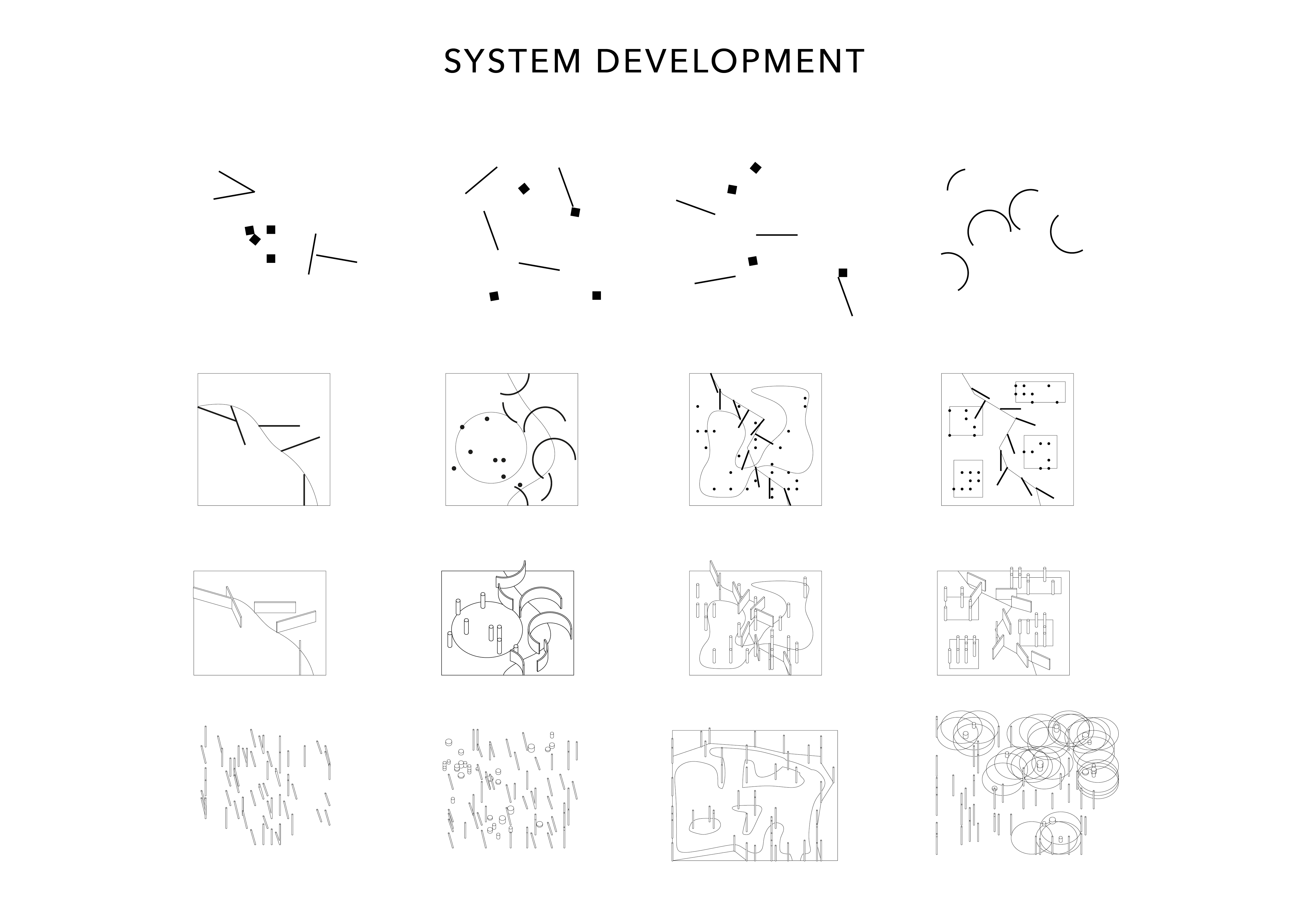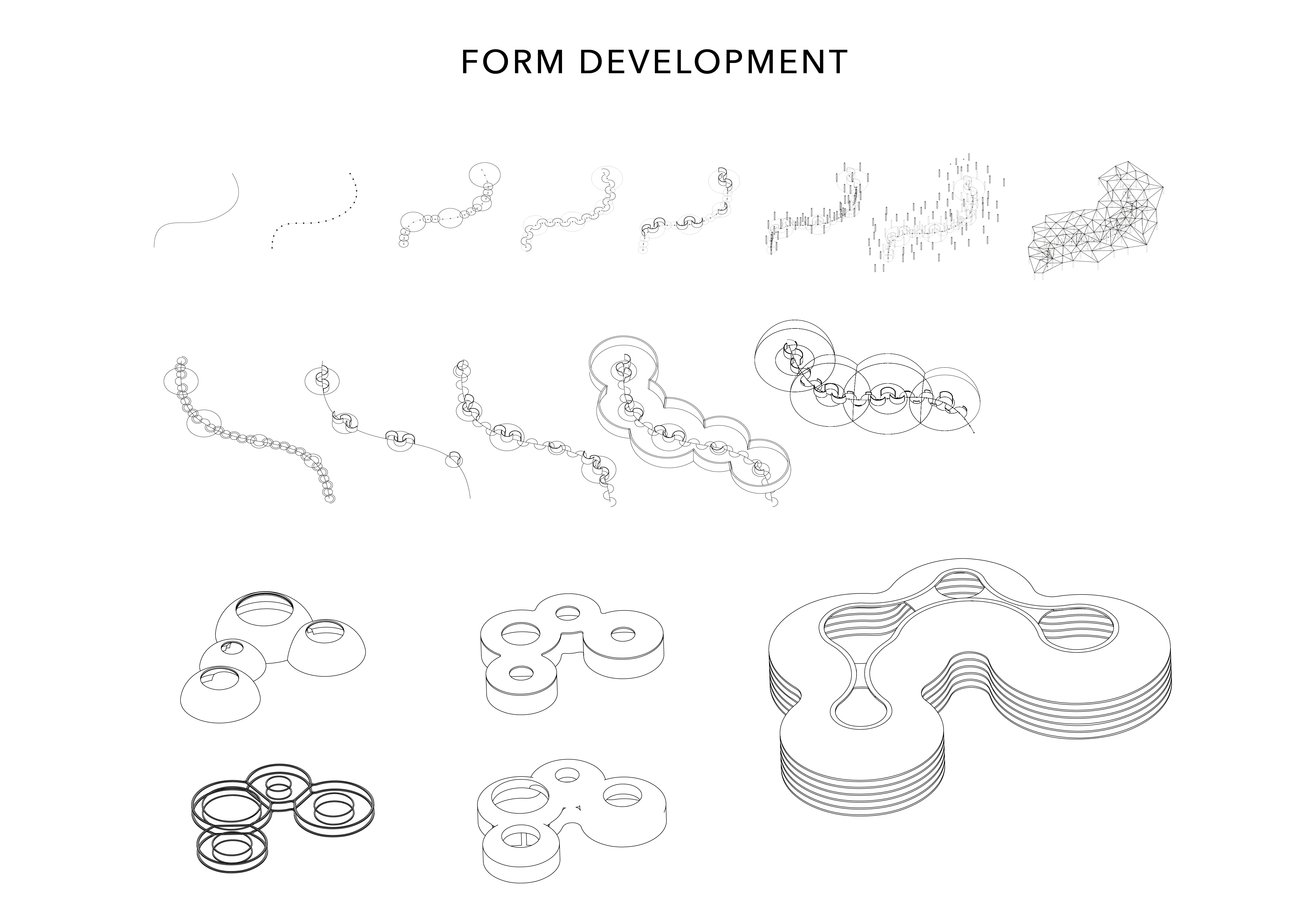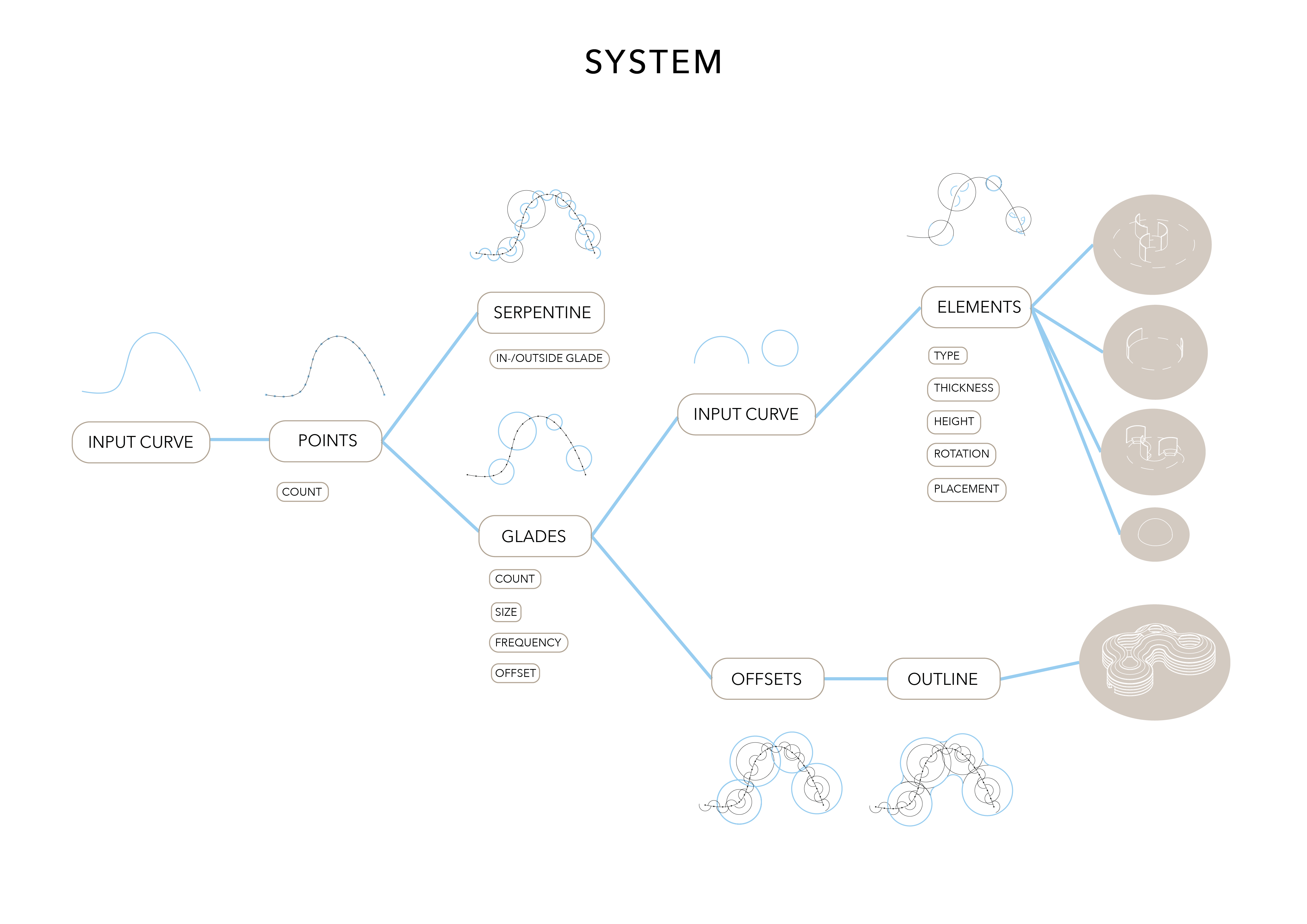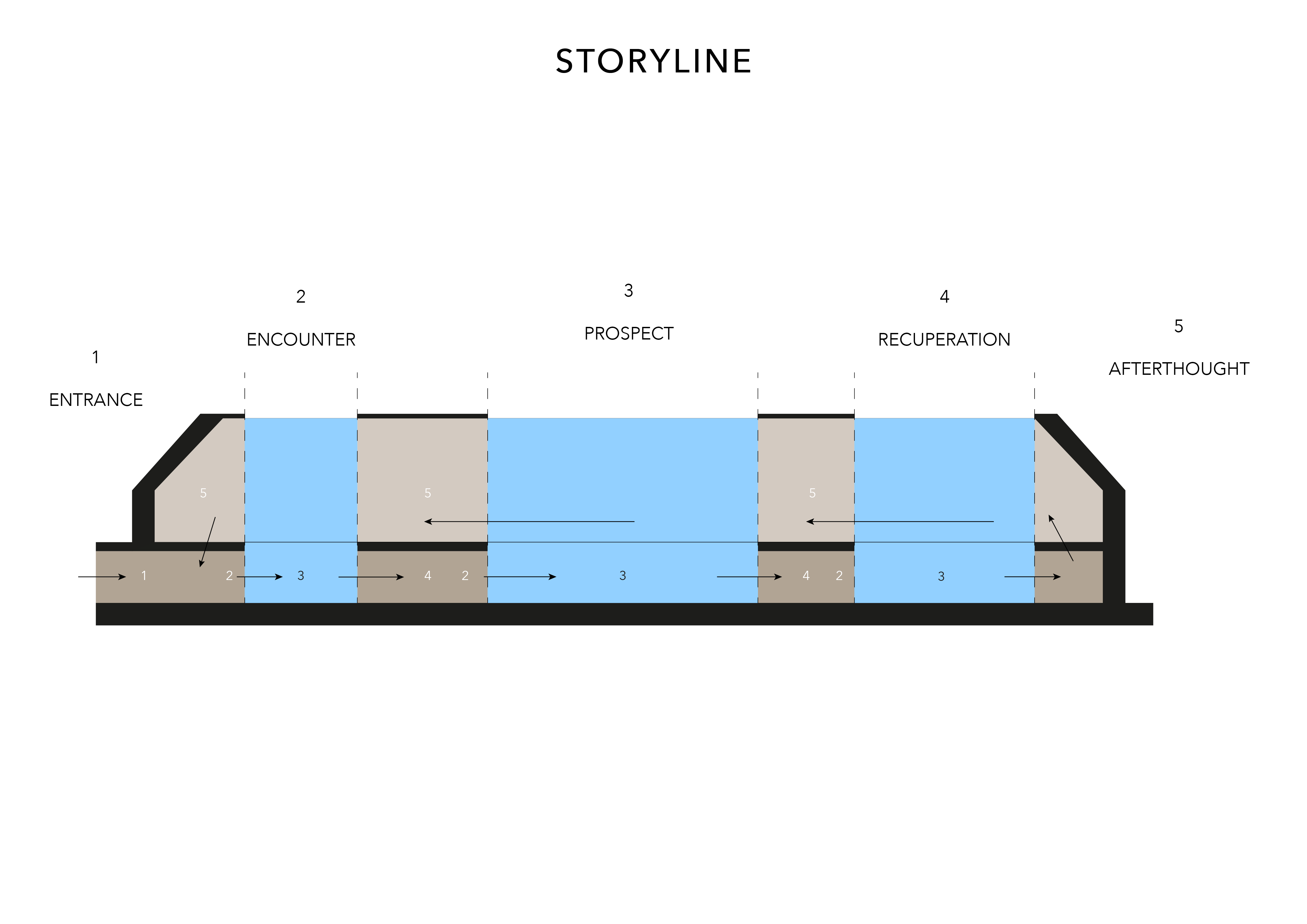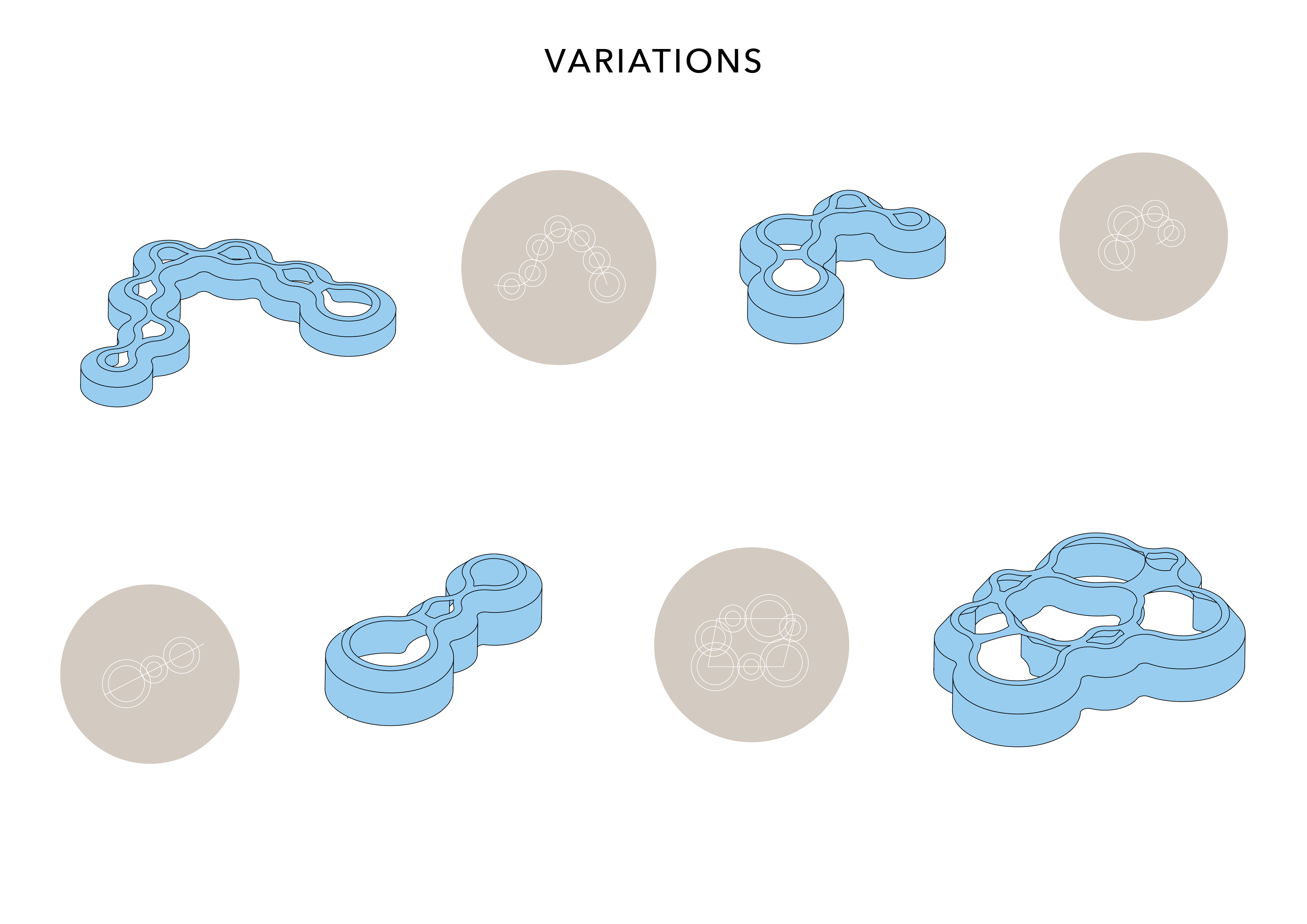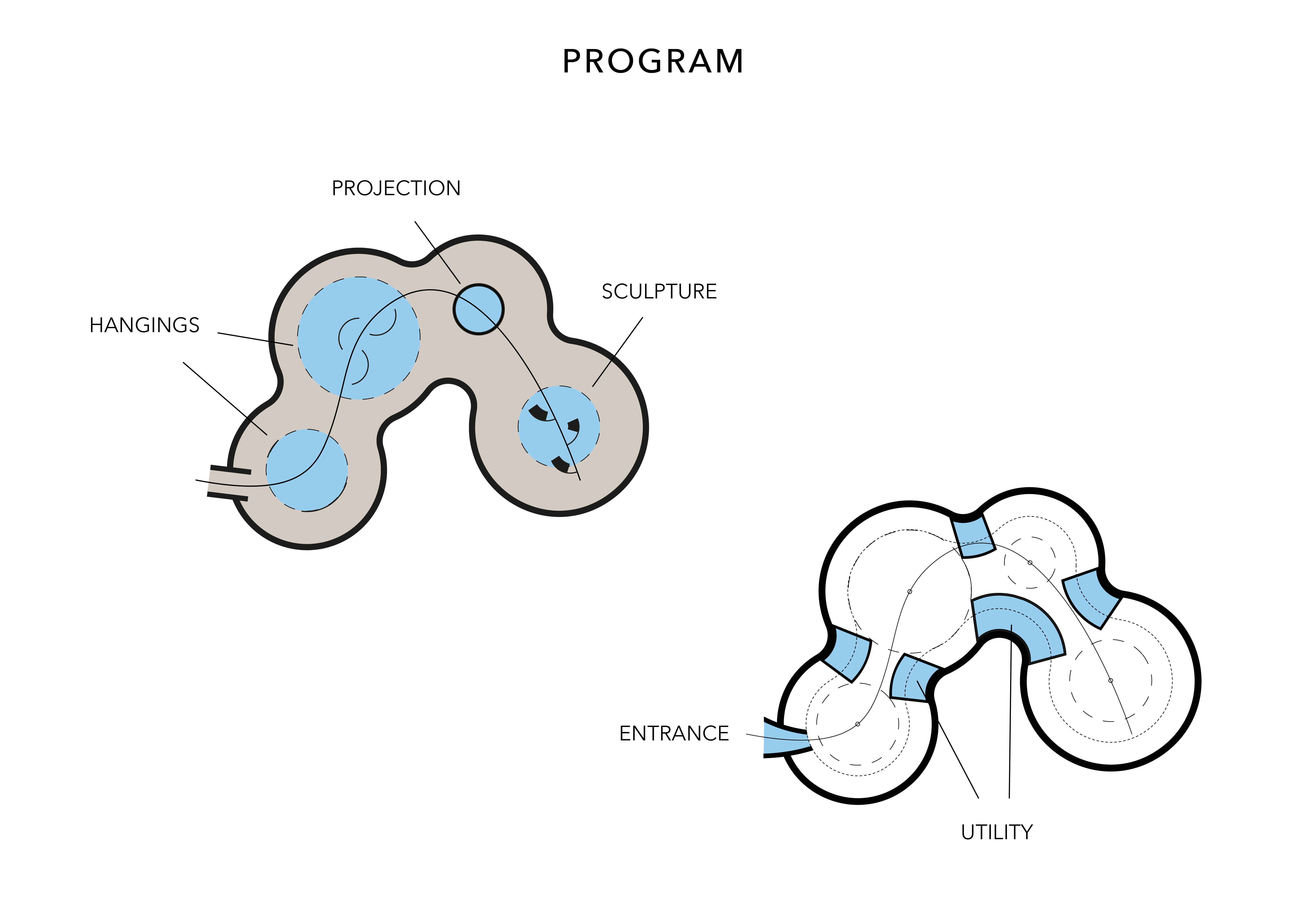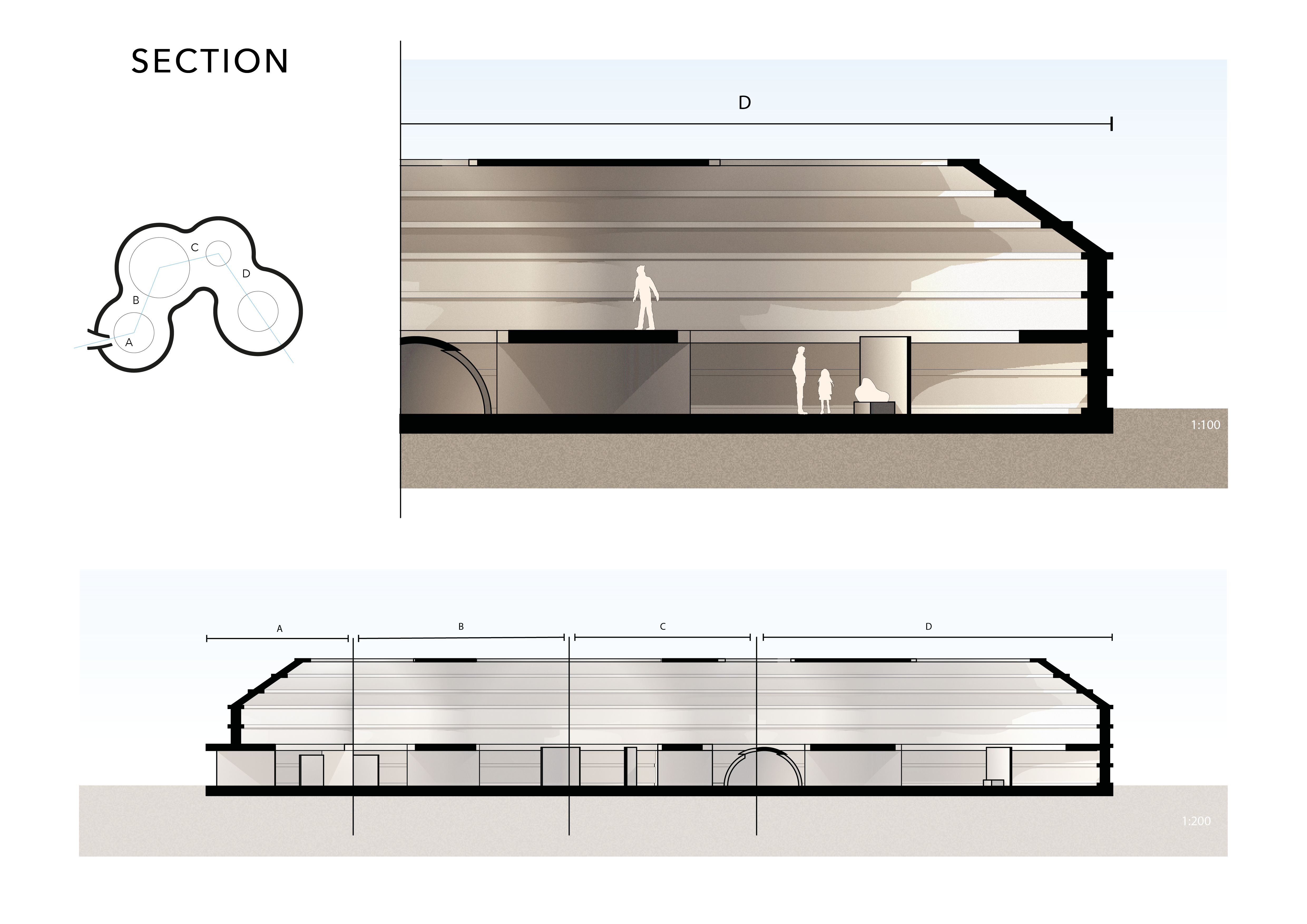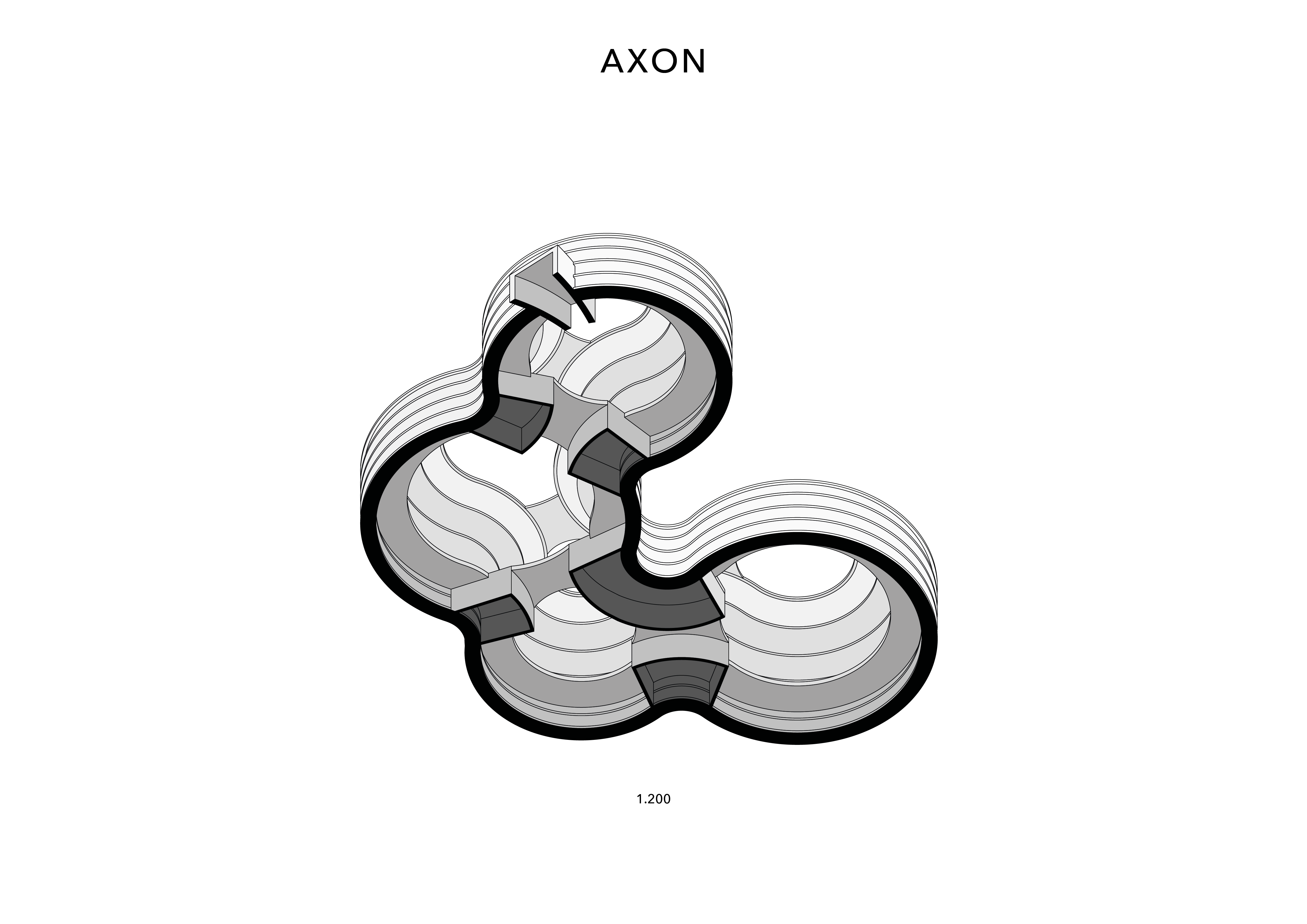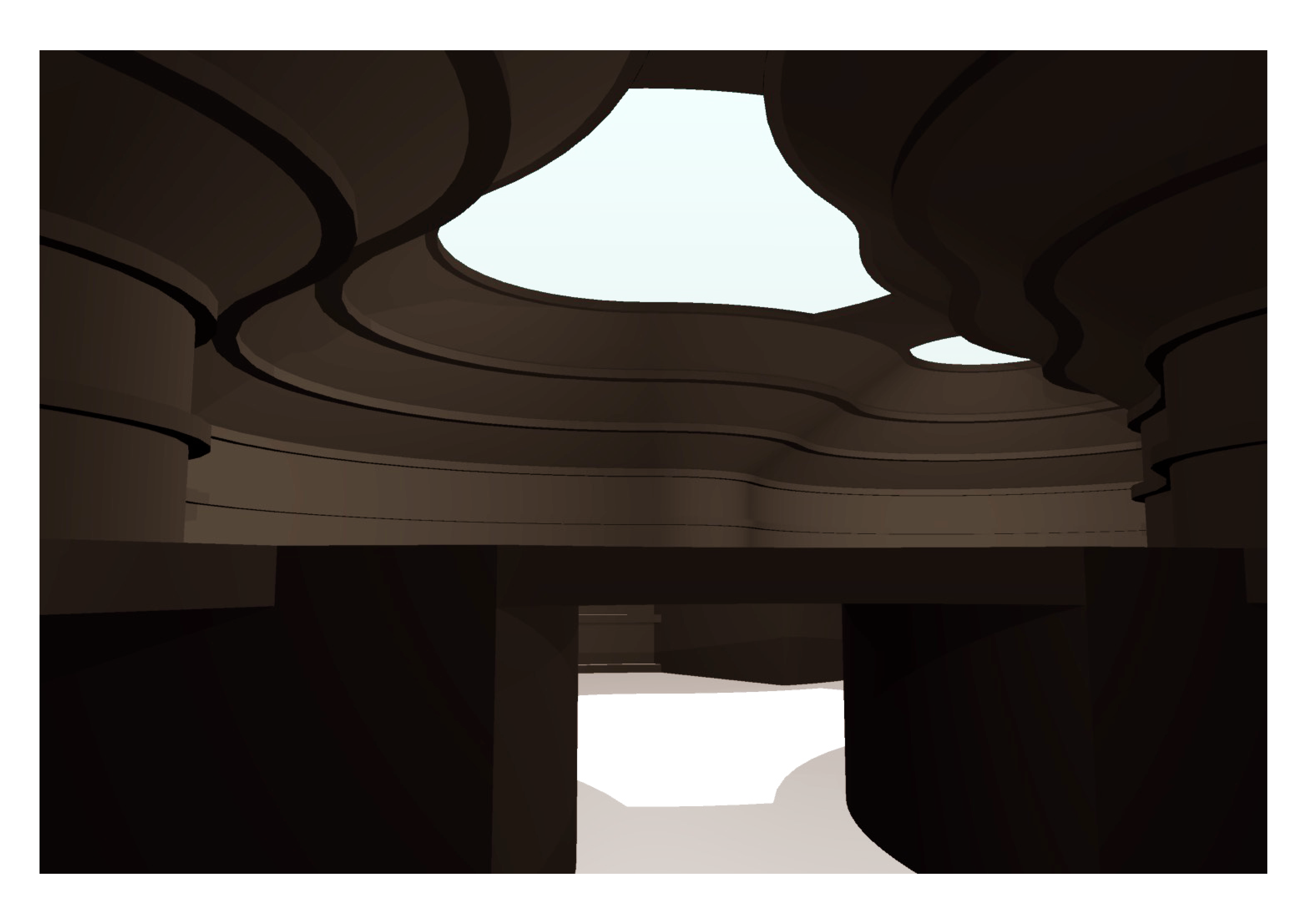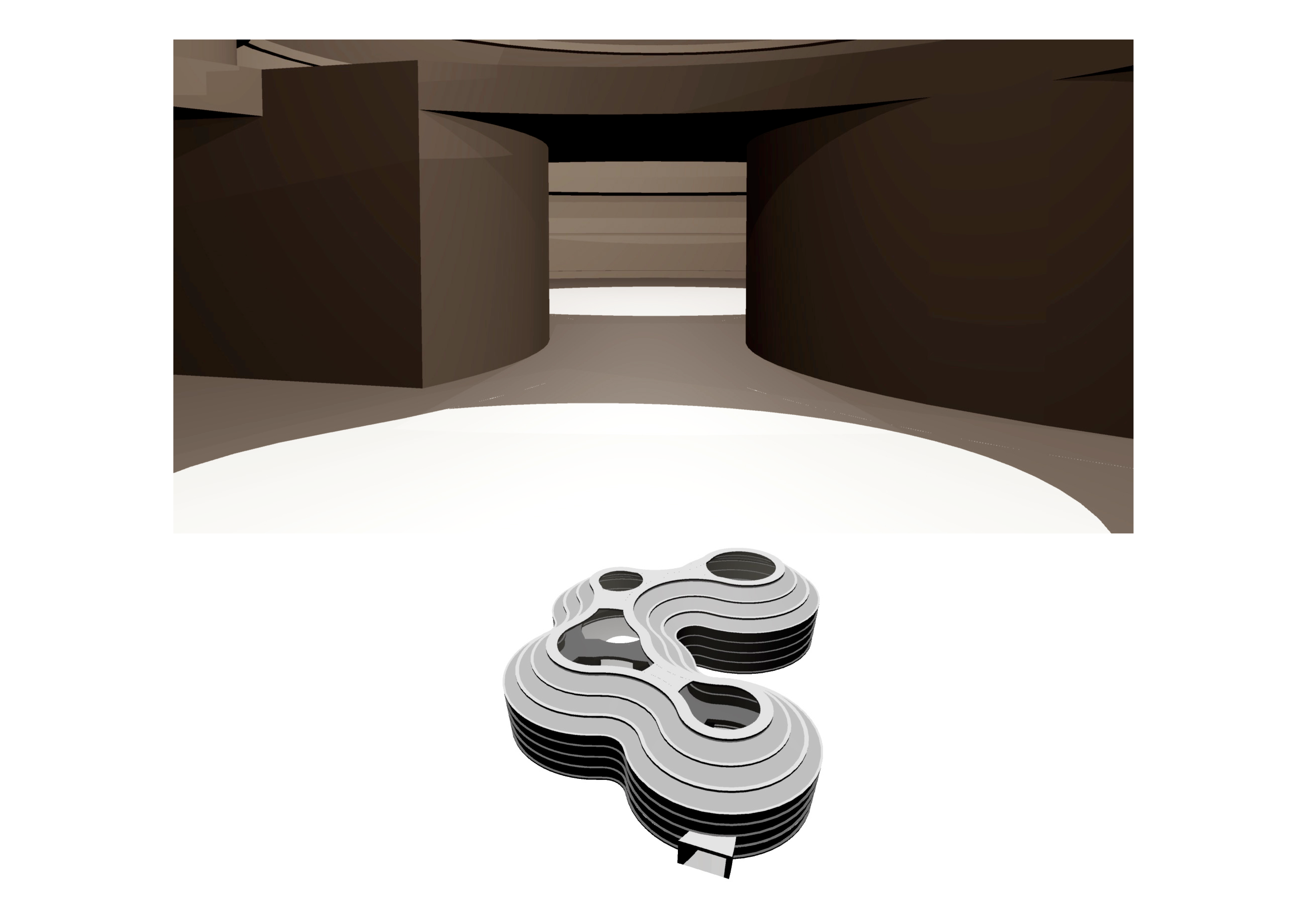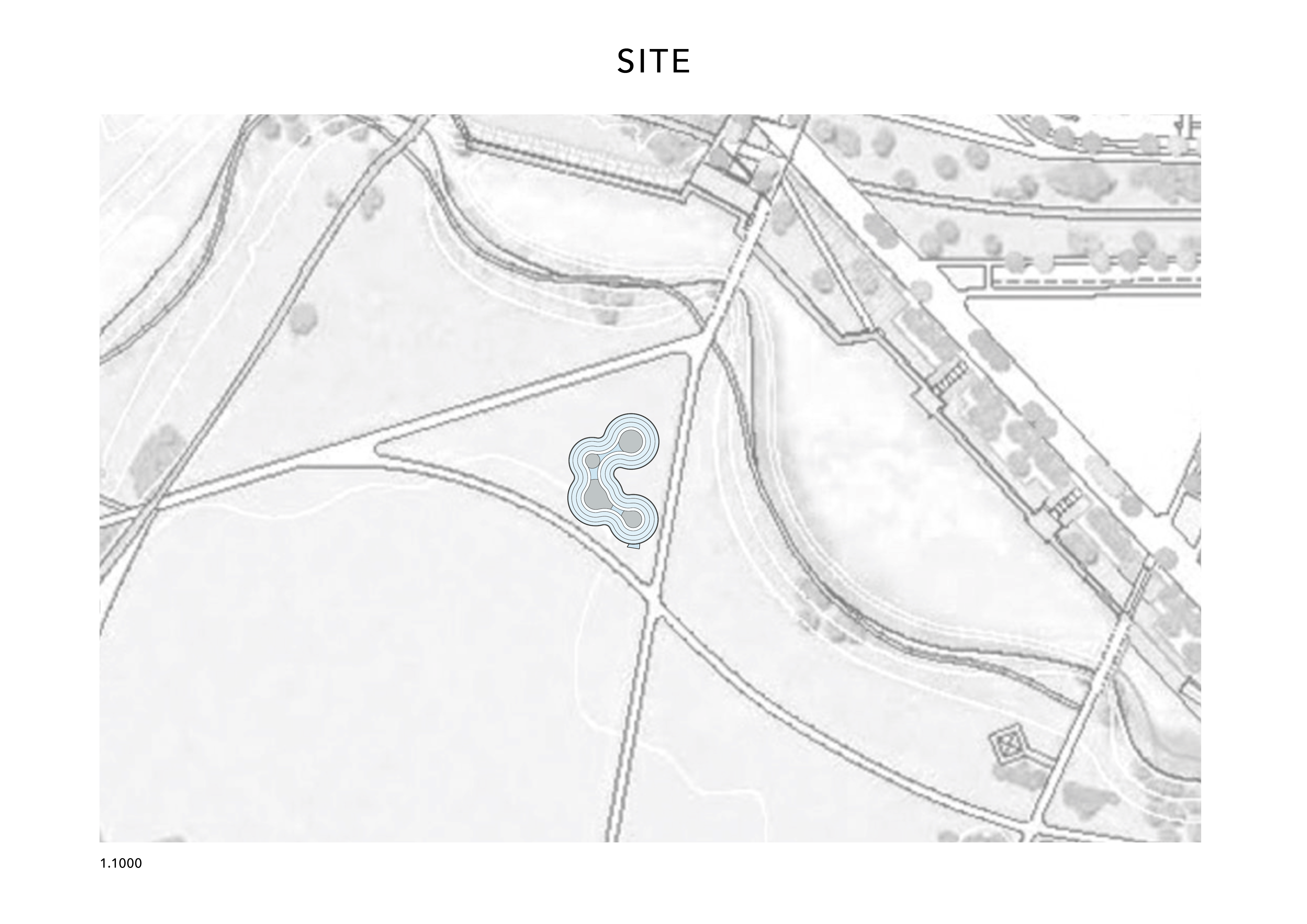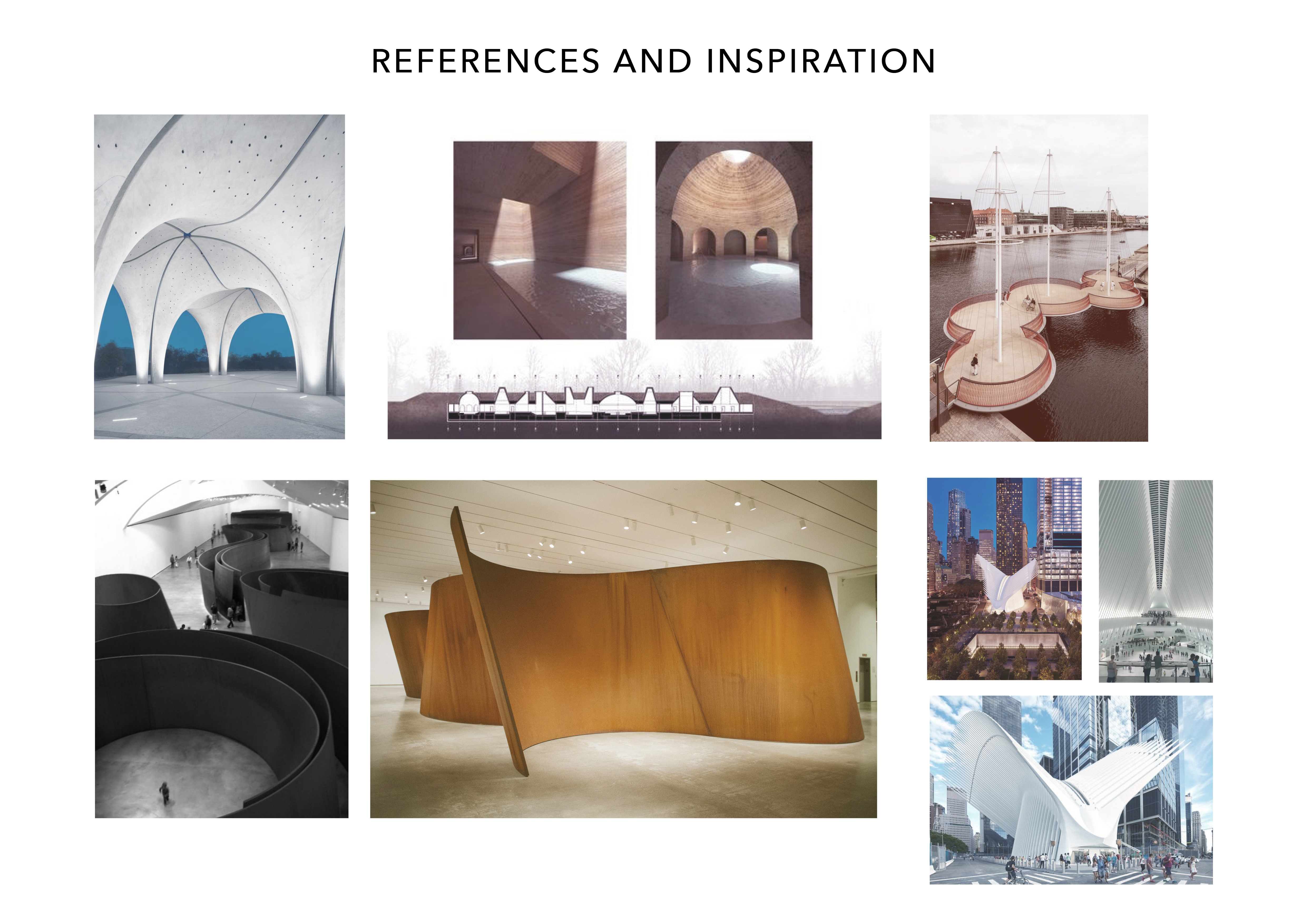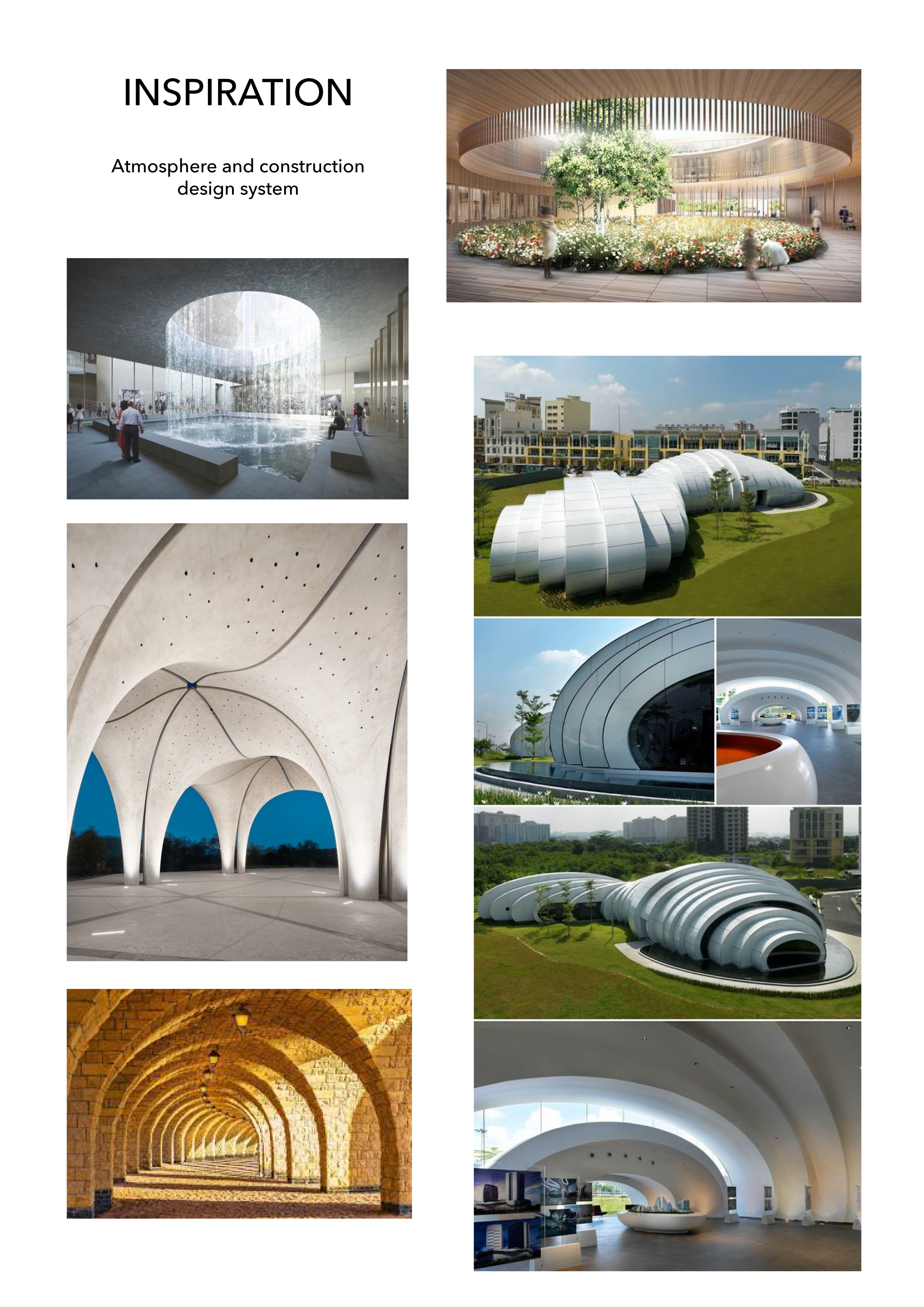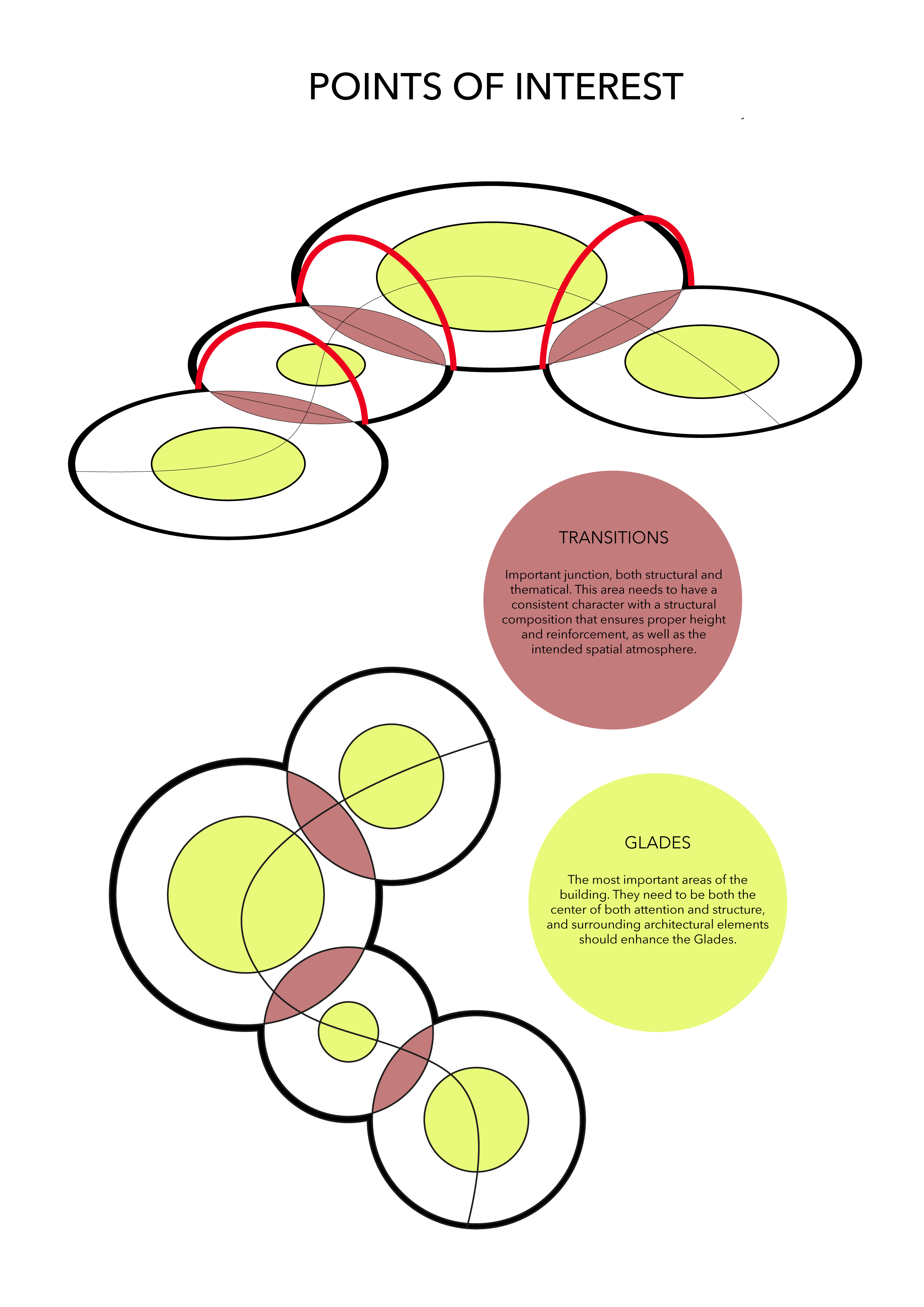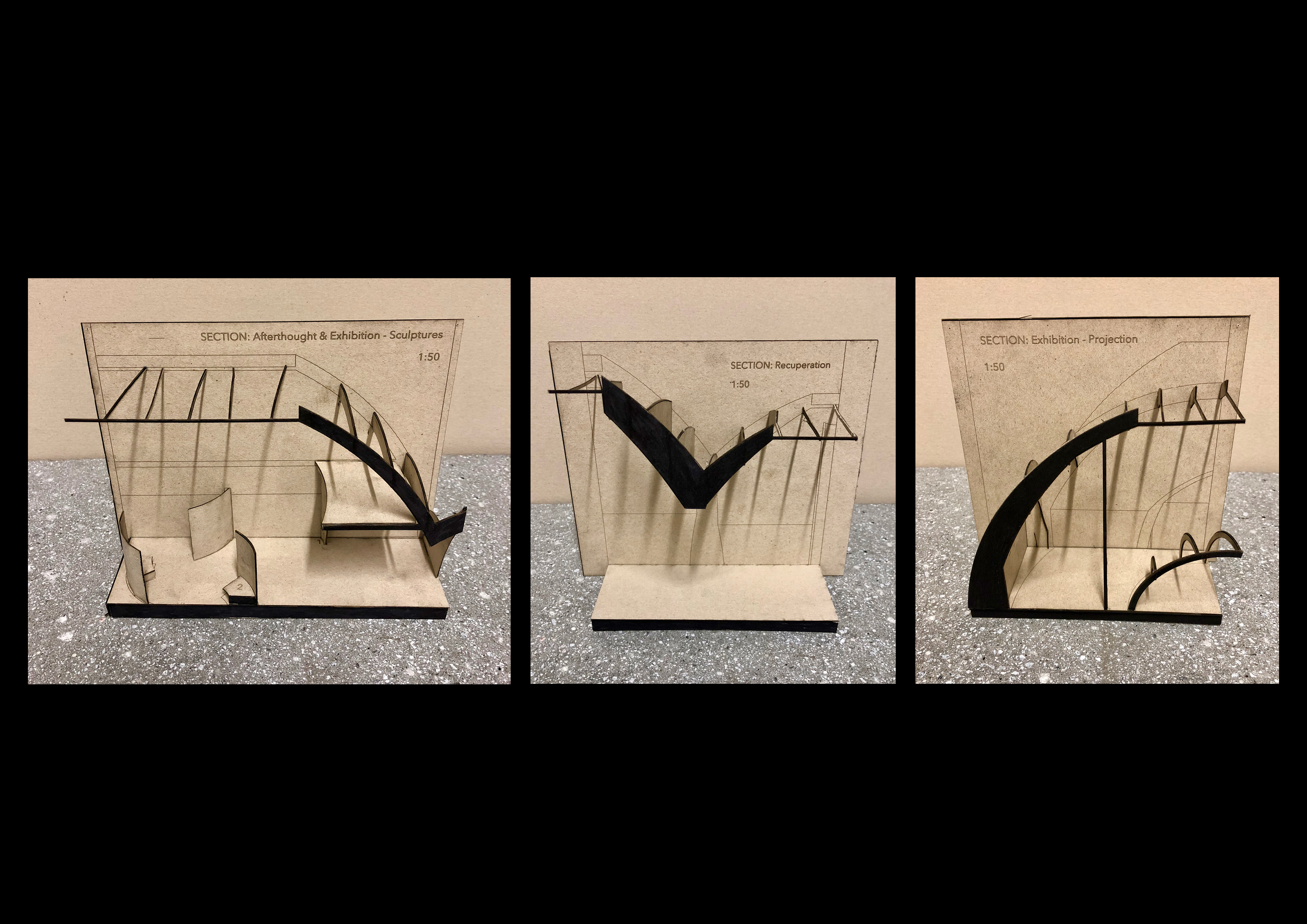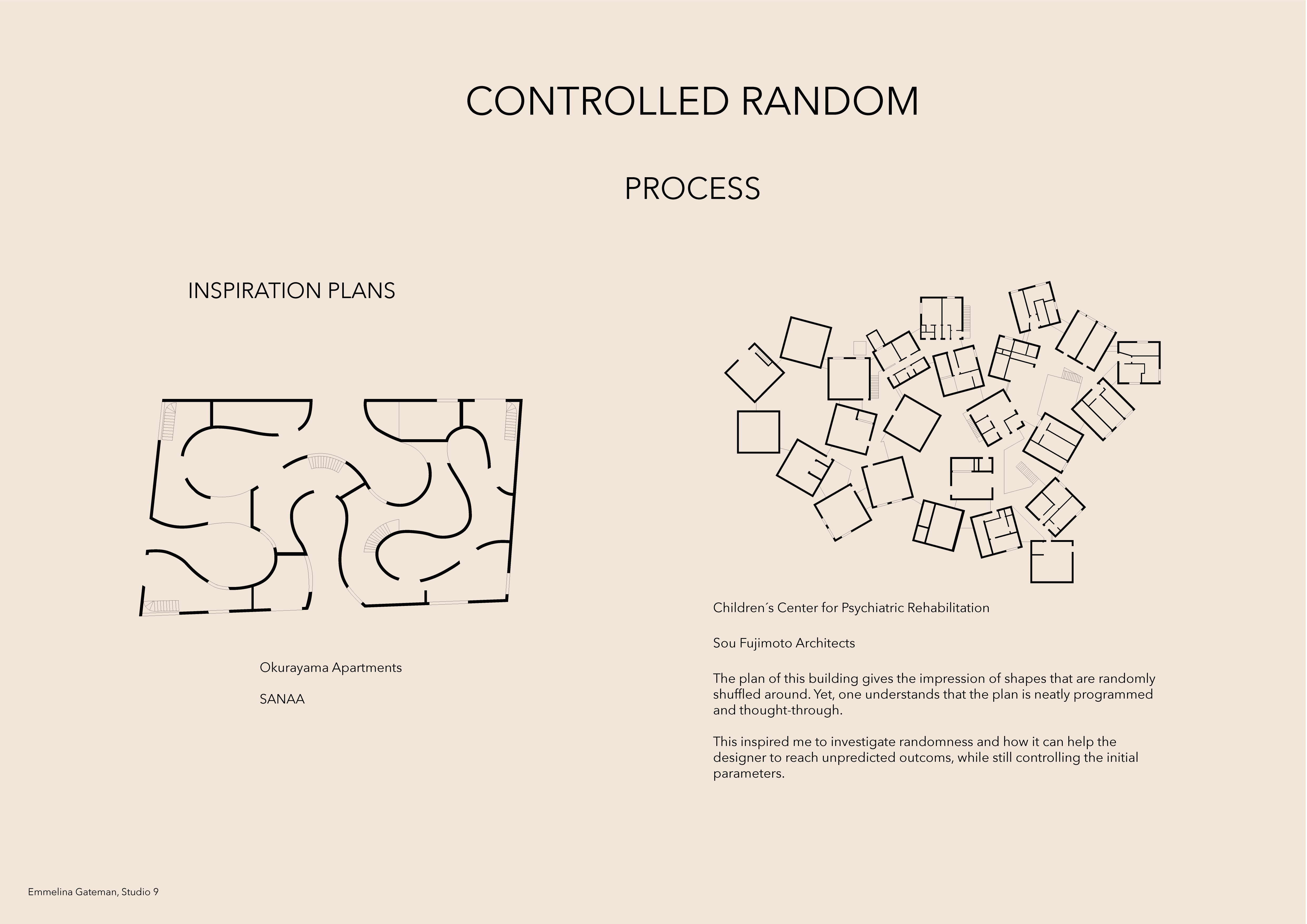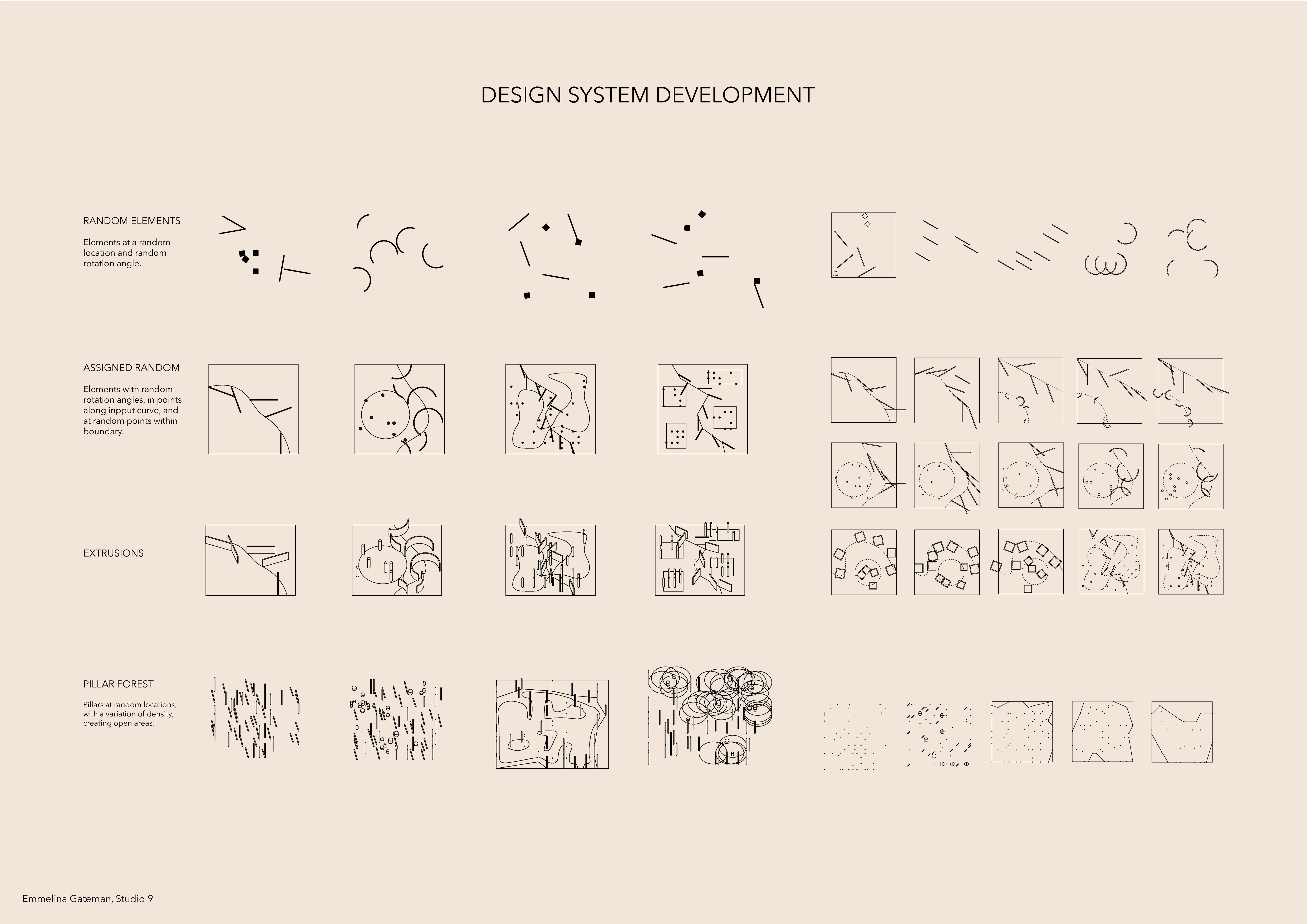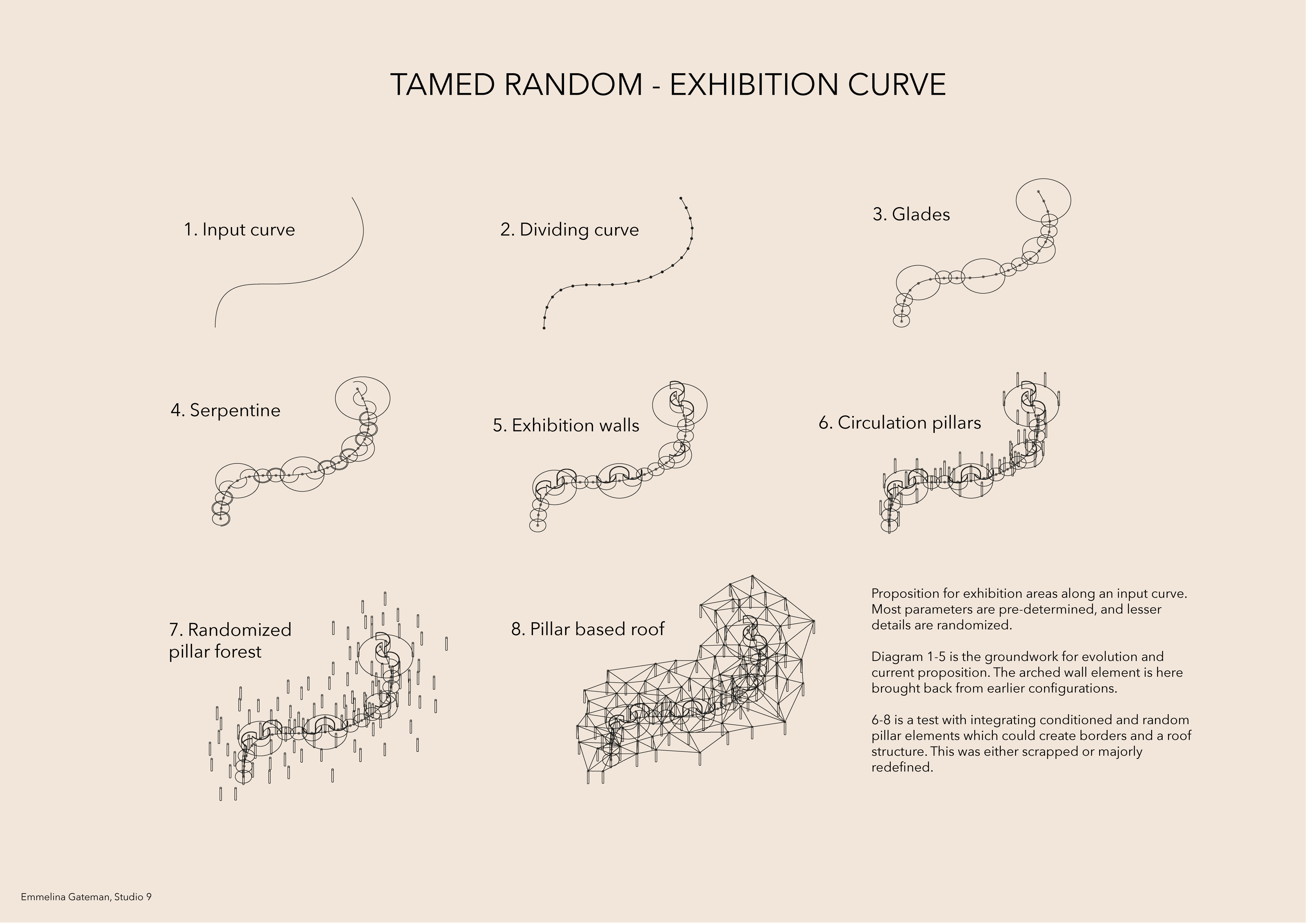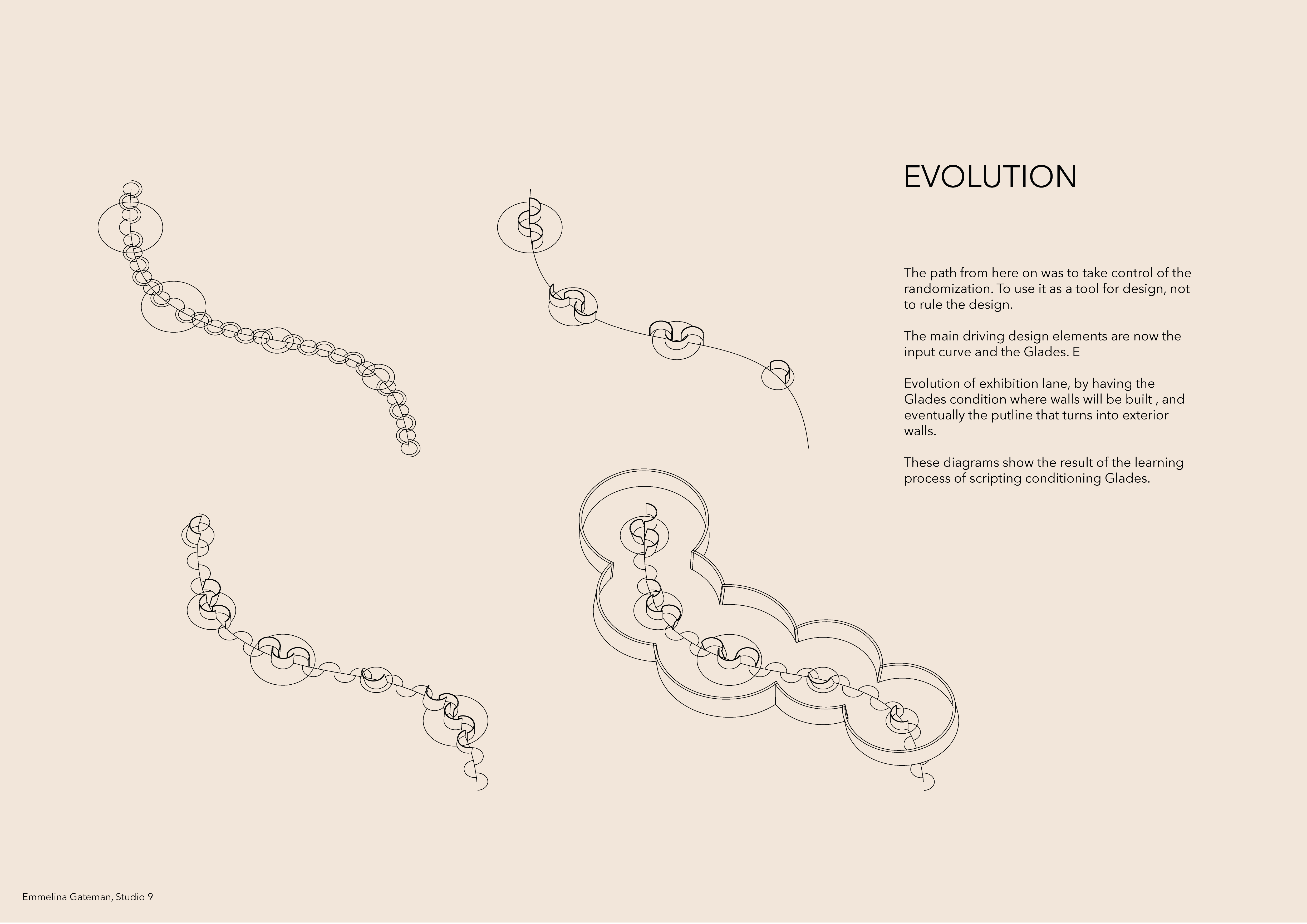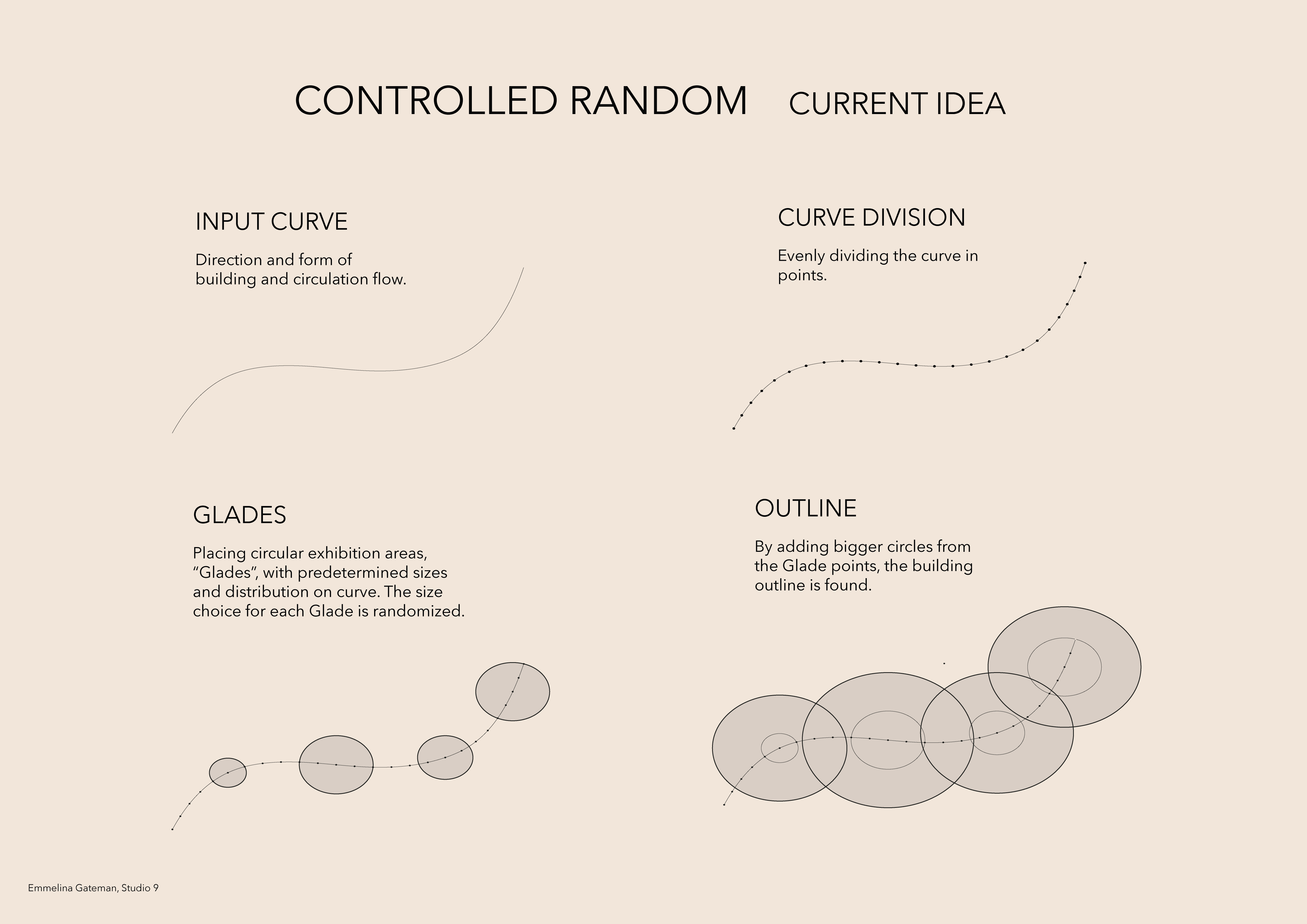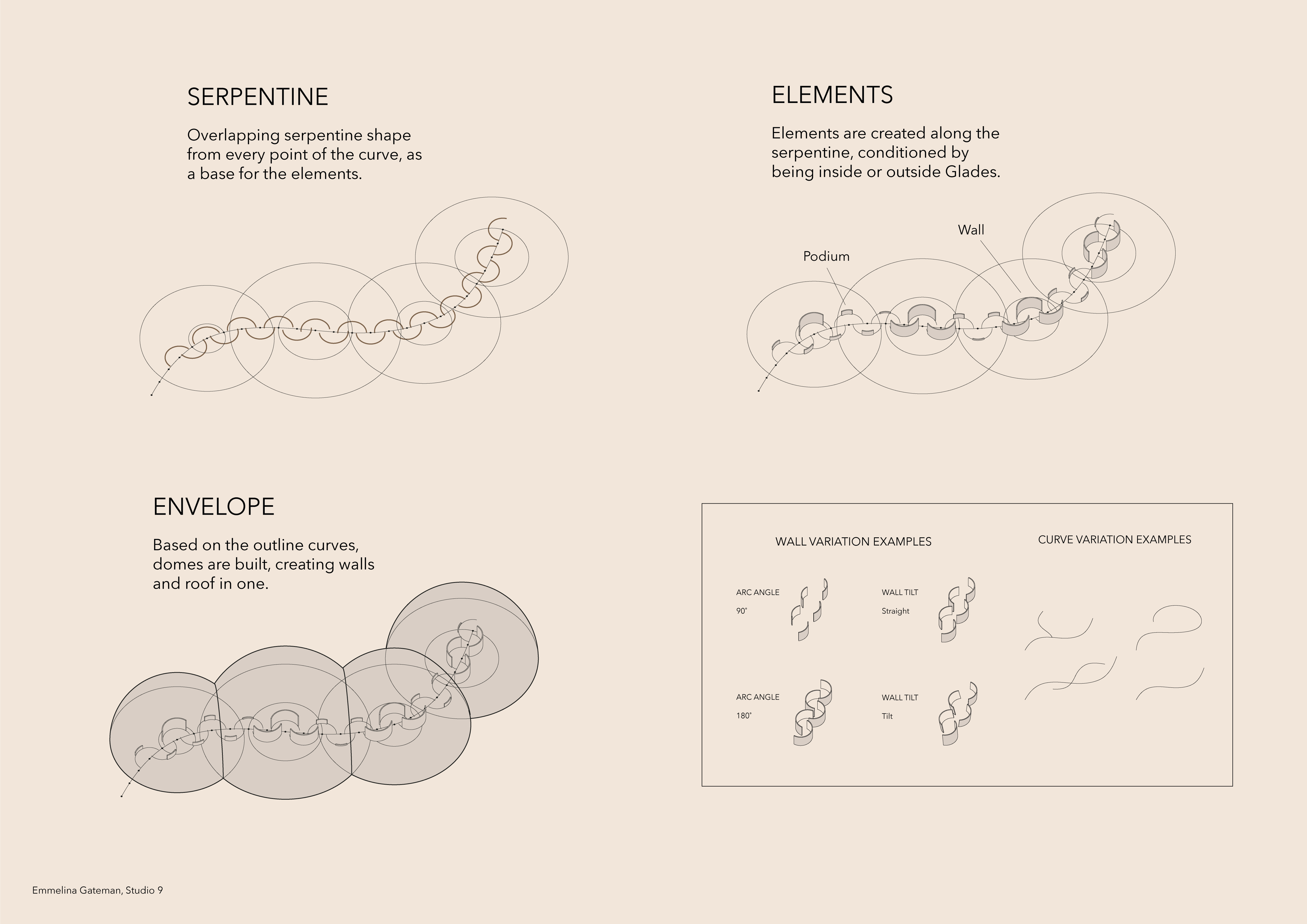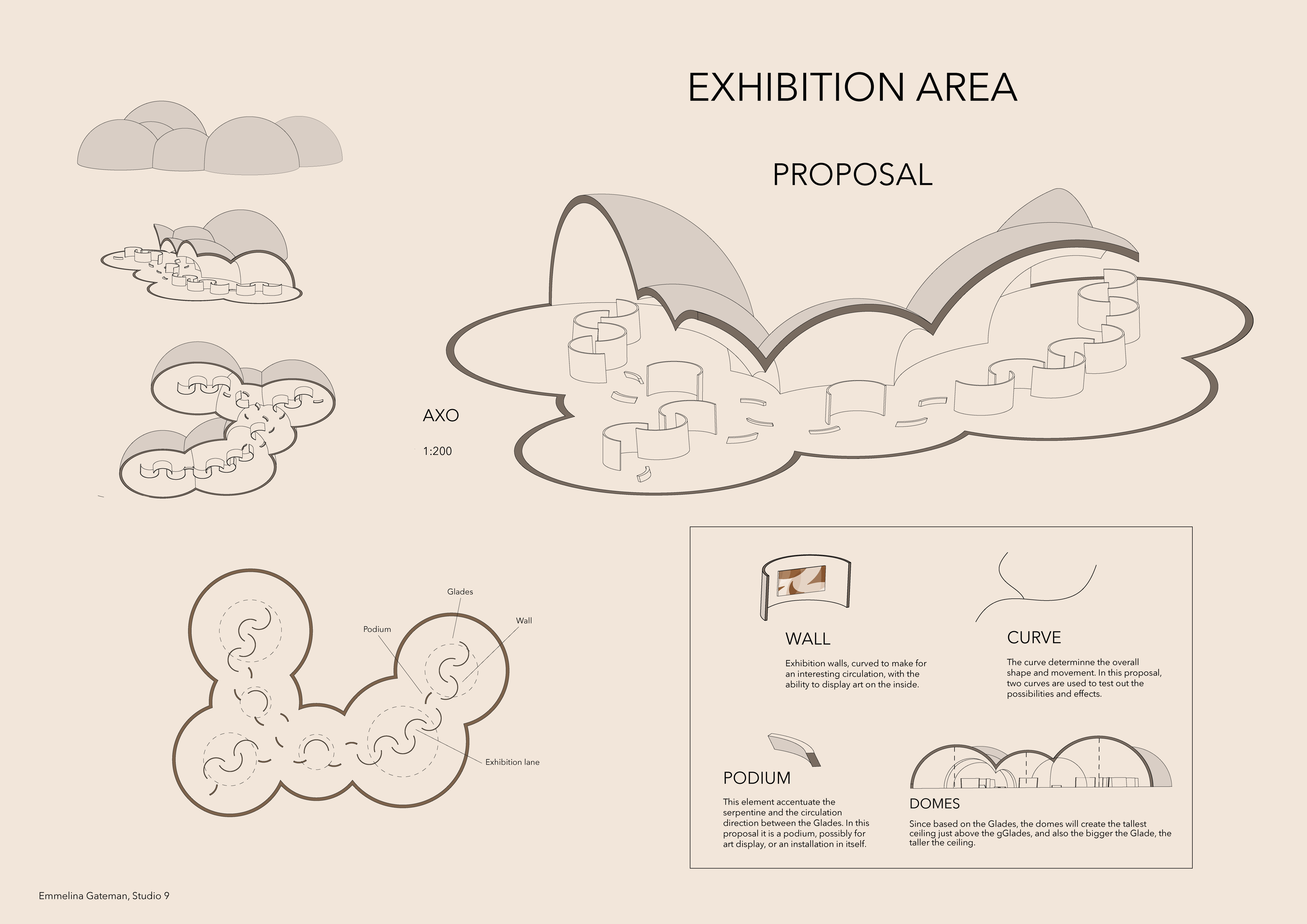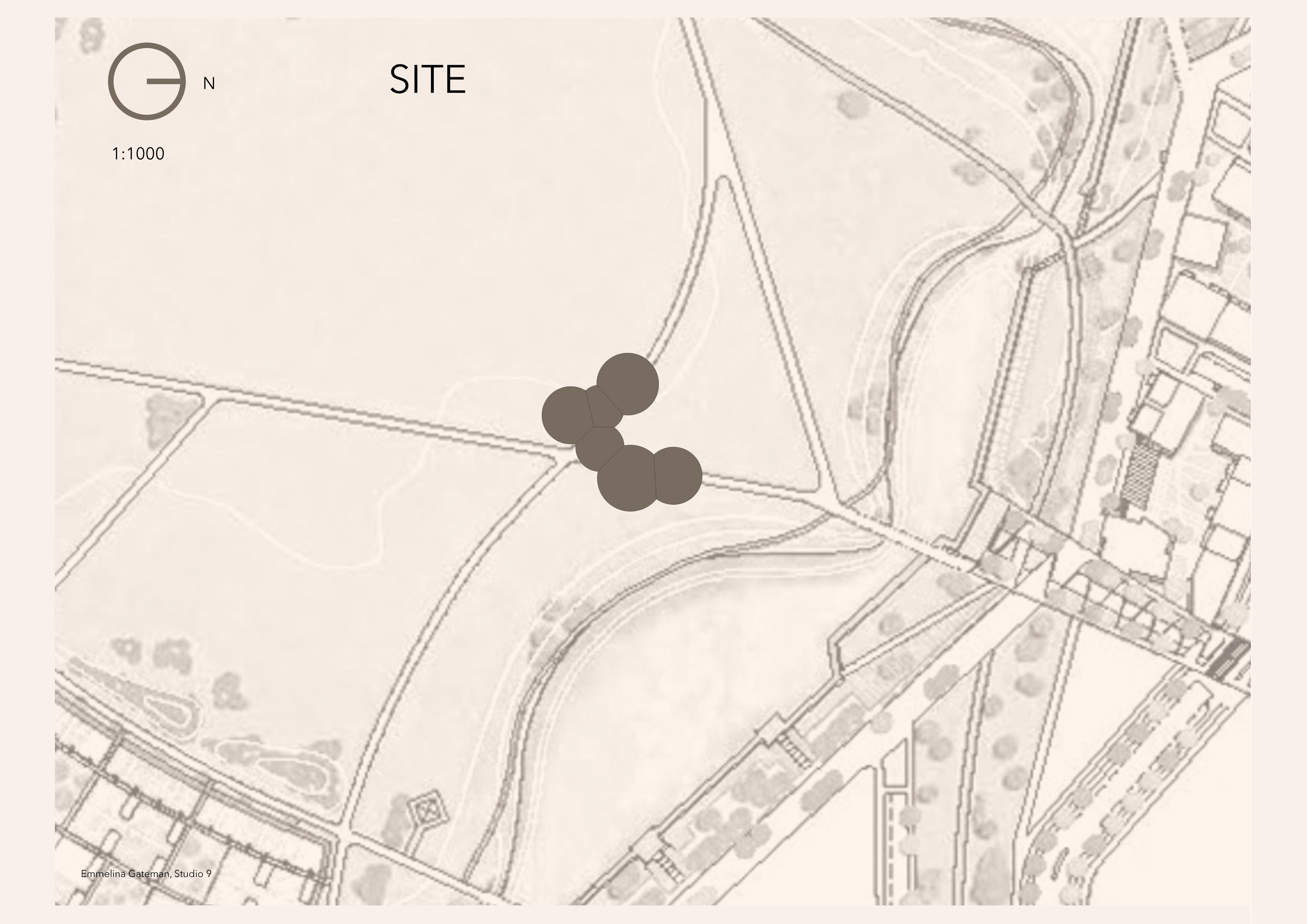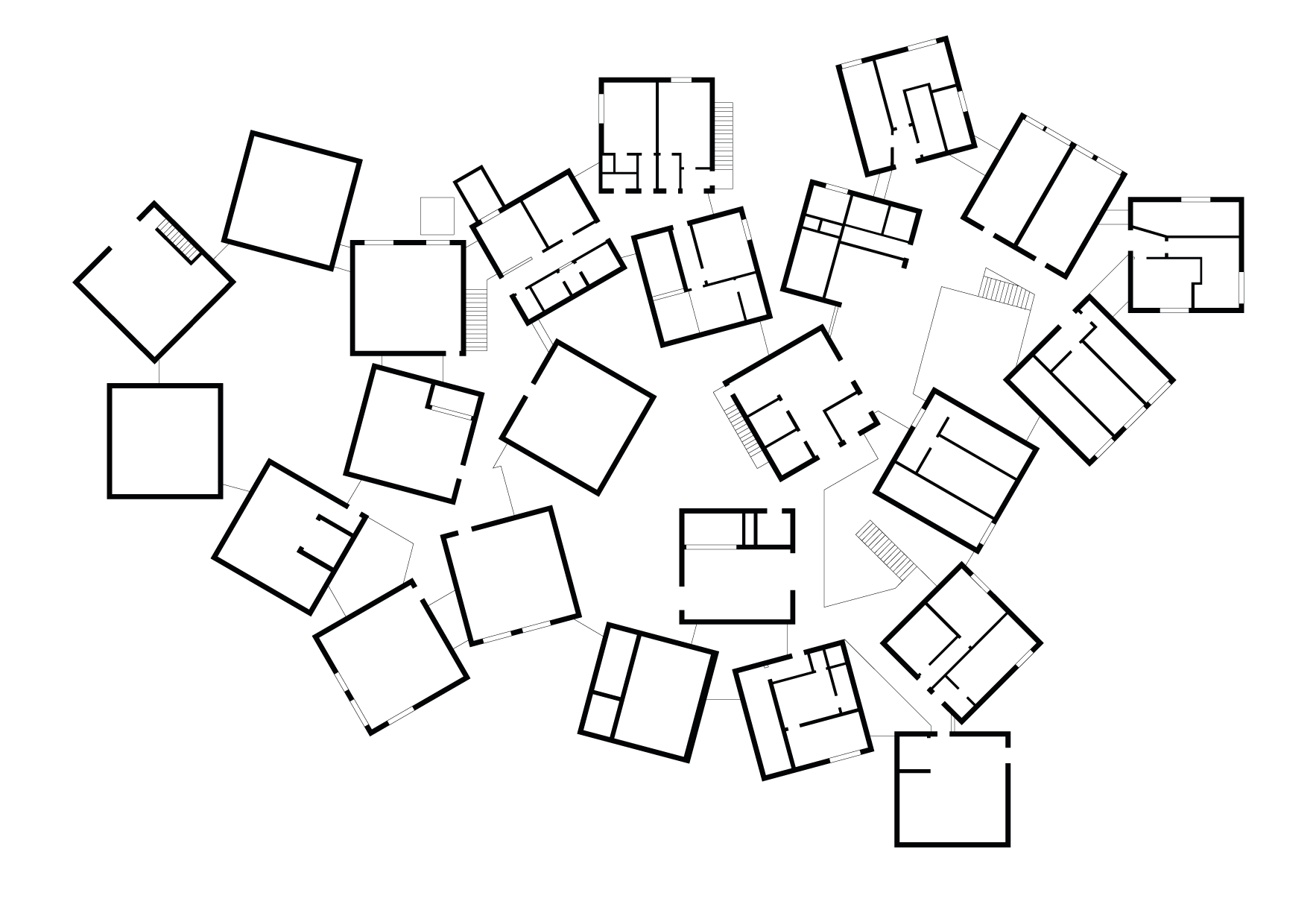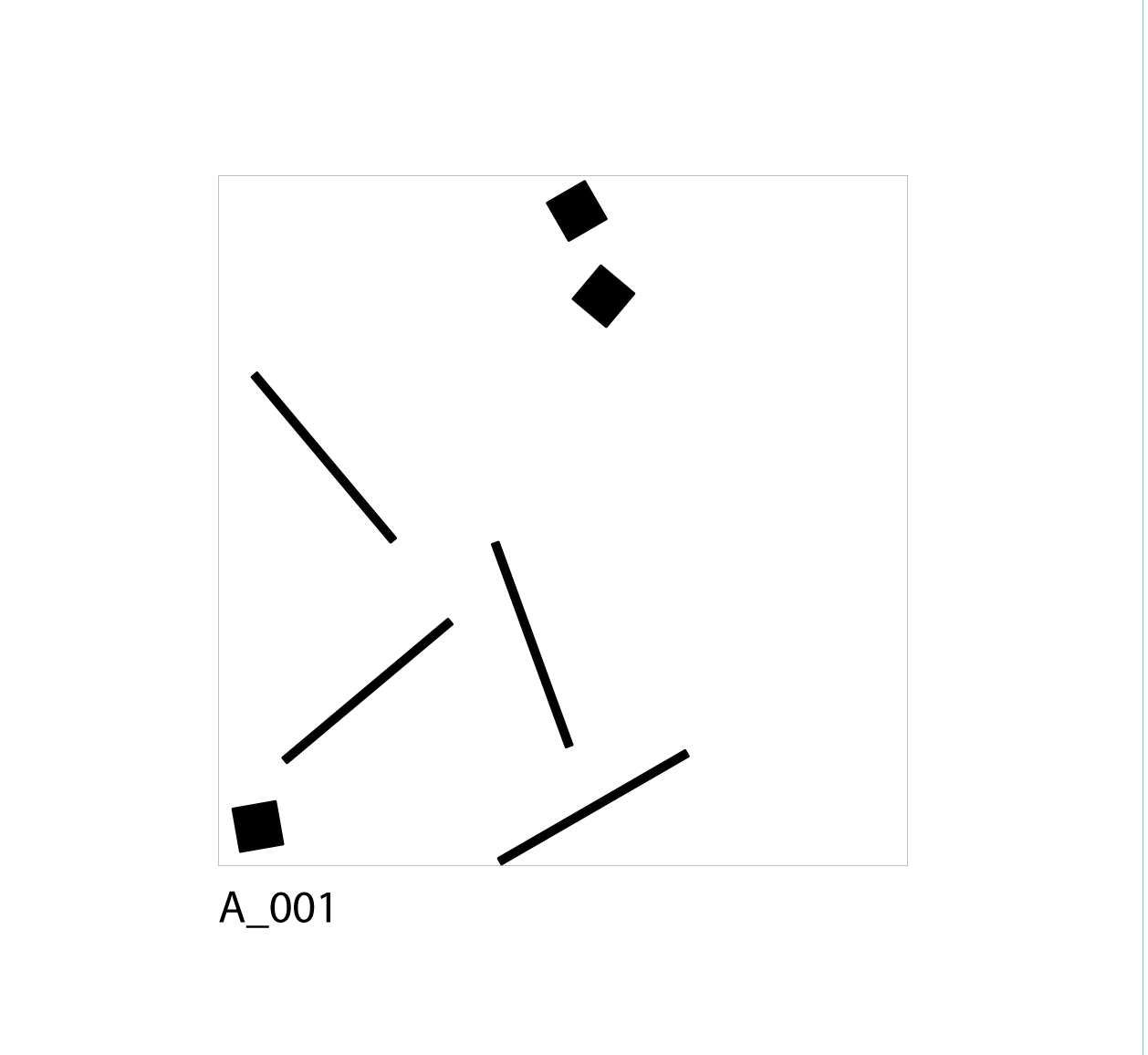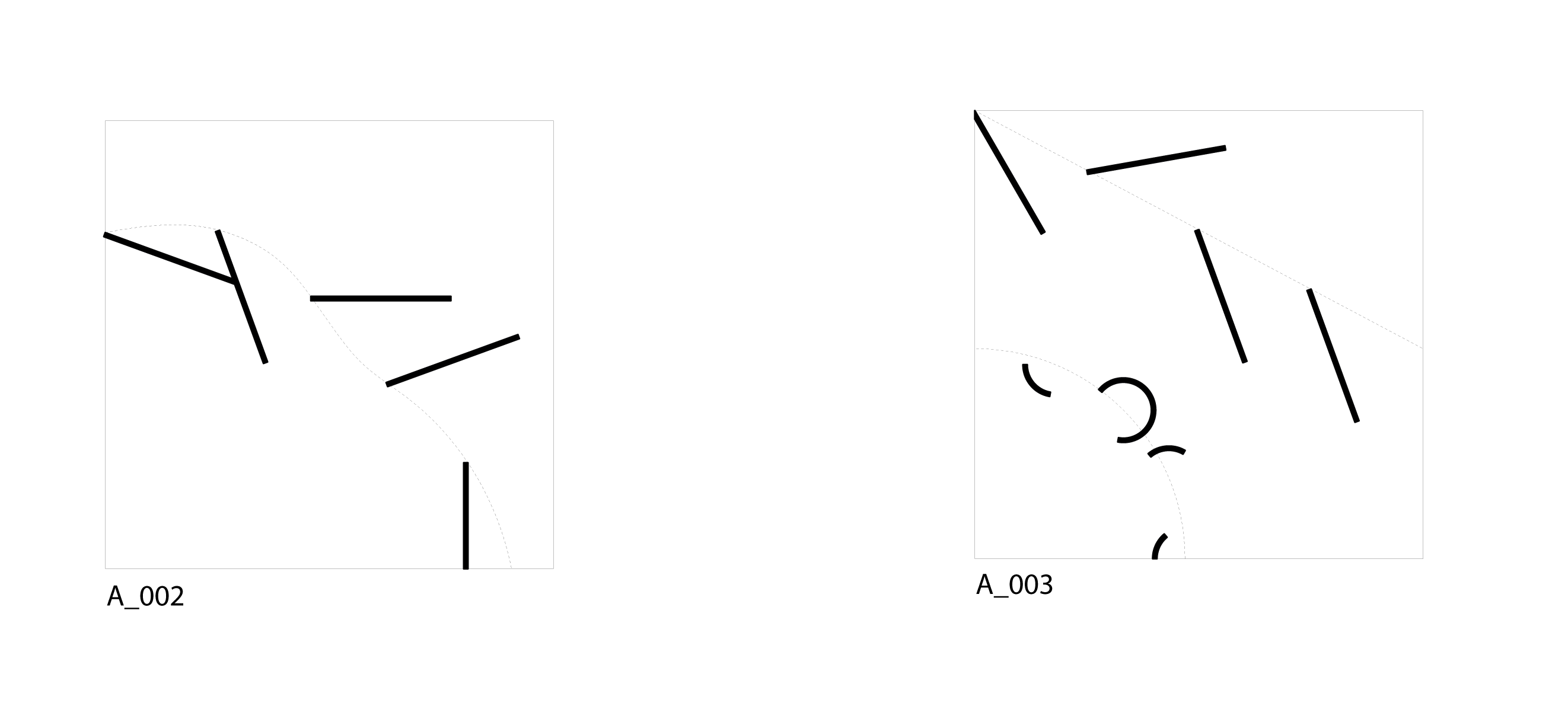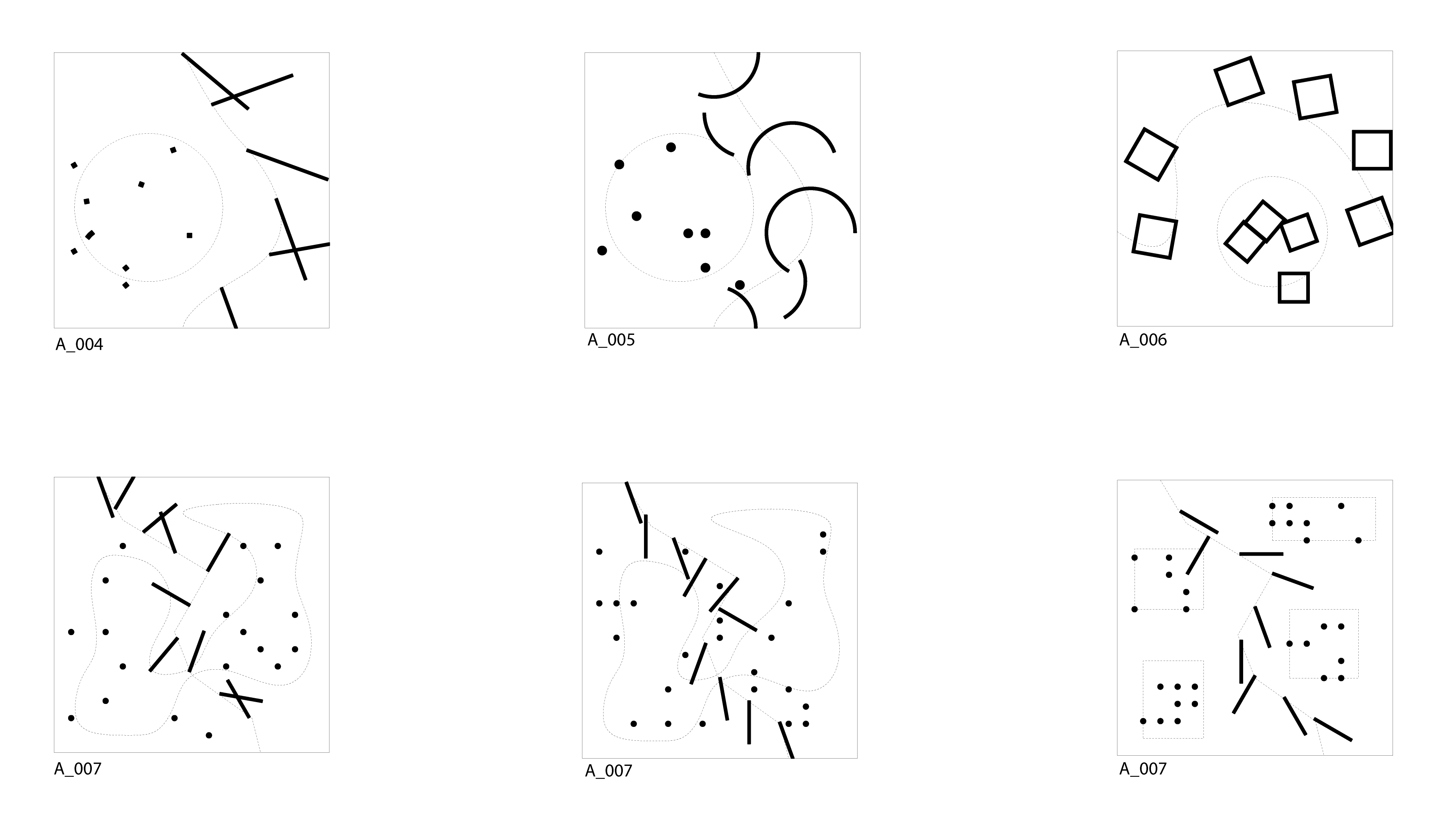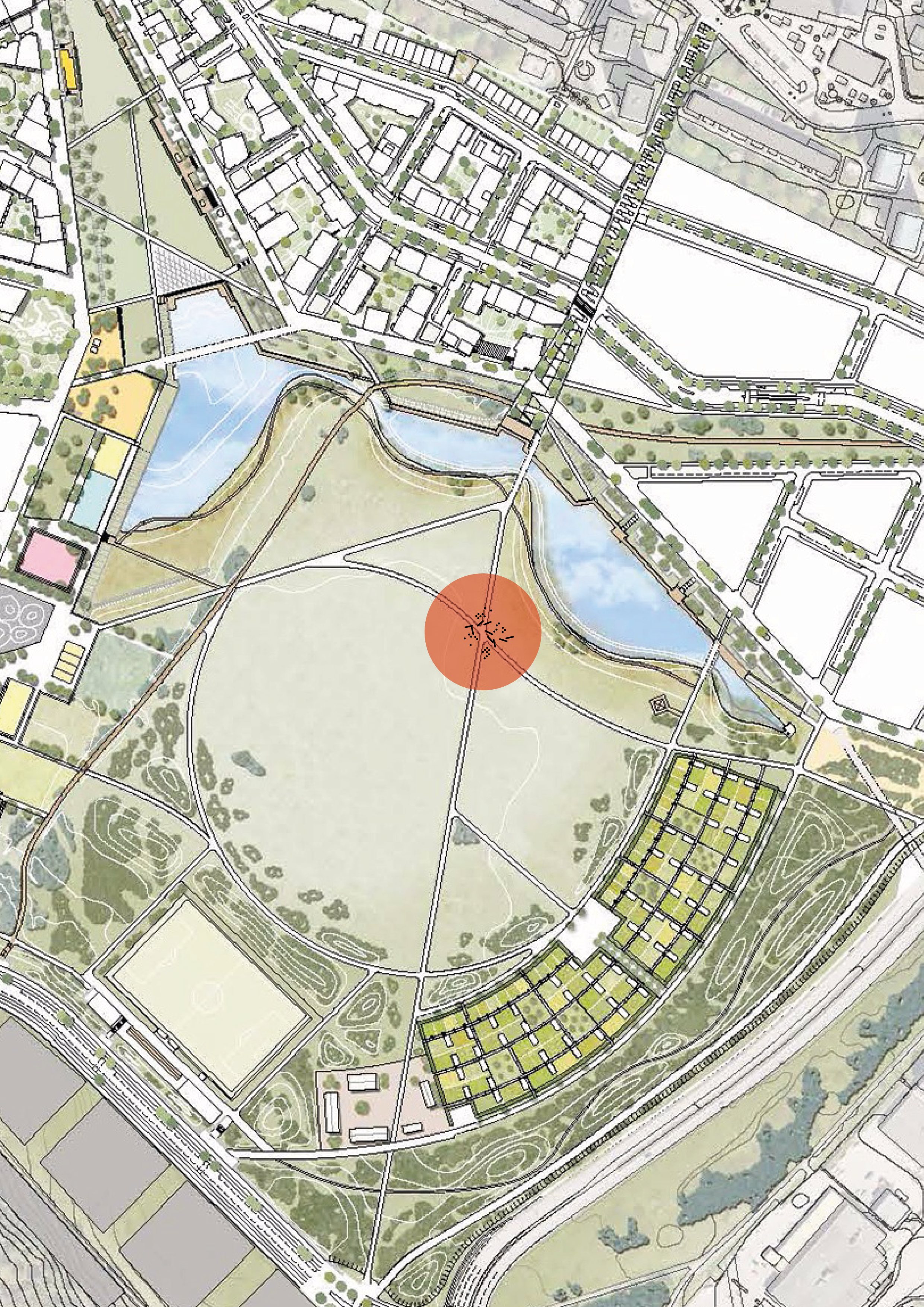The last part of the project has been about developing the structure. Since the system in itself only generates a very basic diagram, the possibilities for translating it into architecture seems endless, but at the same time I wanted to stay true to the underlying system. The first idea of using domes was too diagrammatic and a constraining system.
Instead, the offset circles are joined and filleted to form the general shape of the exterior walls. That shape then lays the groundwork for the shell structure, extruding it vertical to shape walls and offsetting them inwards to create a sloped roof, naturally shaping openings around the Glades beneath. The structure consists of a primary, vertical structure, and bands of secondary outlines, visible both externally and internally.
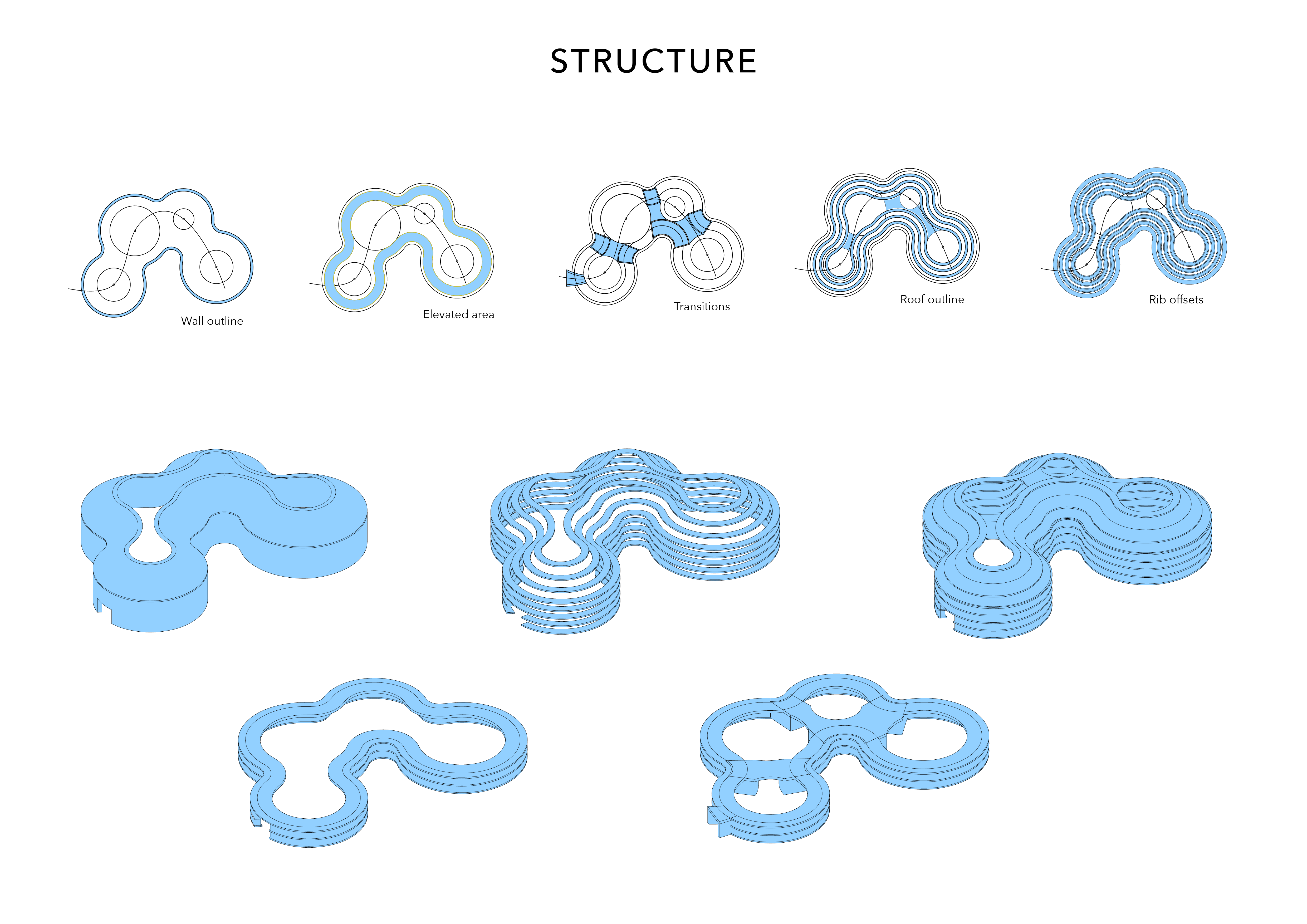
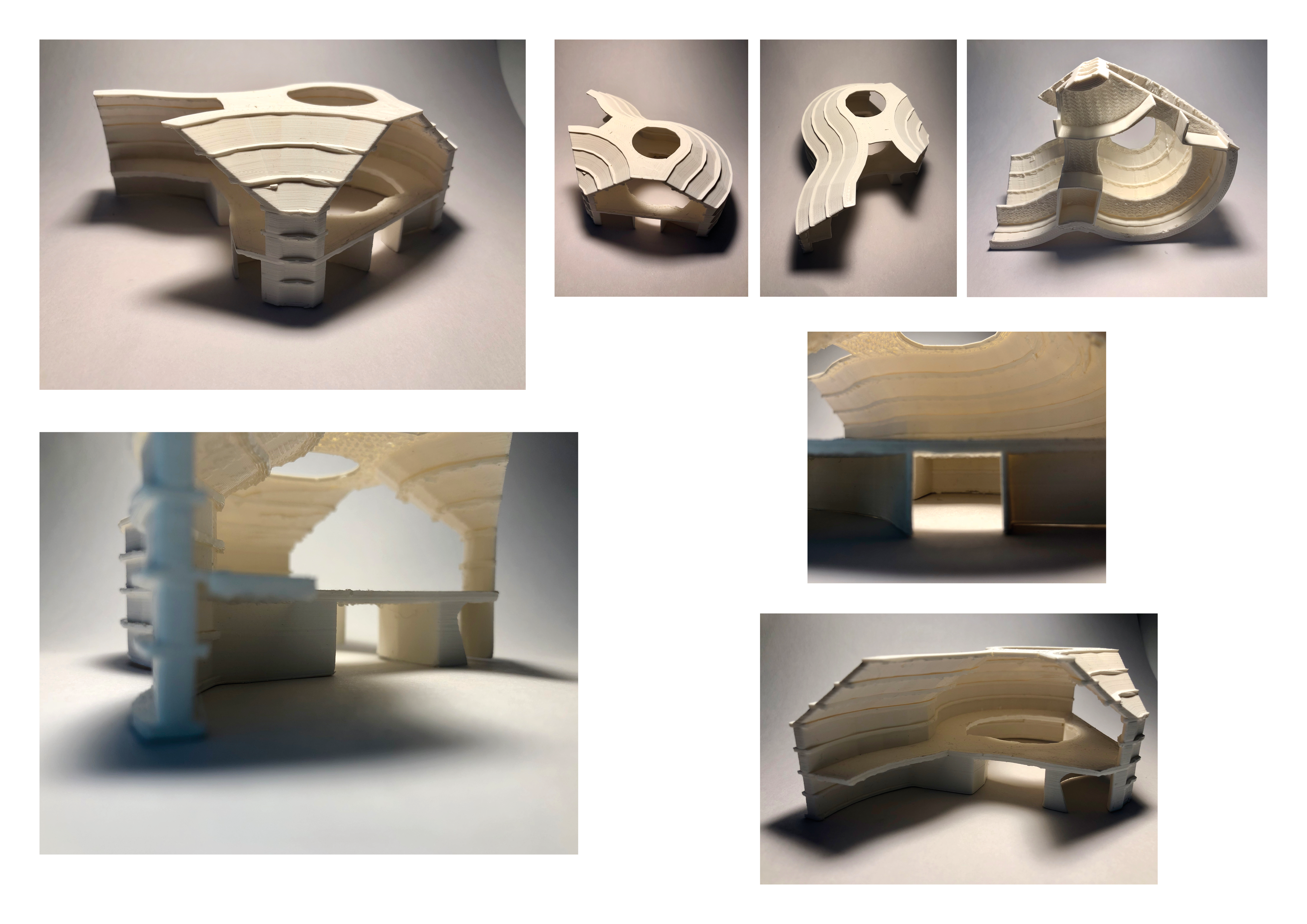
This project has forced me to analyze my own design process, and pushed me outside my comfort zone. It has also been an interesting struggle between me and the system, by being so smitten with the possibilities of the tools we have investigated, and then realizing that I need to take back the power and tame my own system. Writing a Python program from scratch defined this project because of all the possibilities it created, and the challenge to extinguish a simple form to be translated into architecture.
